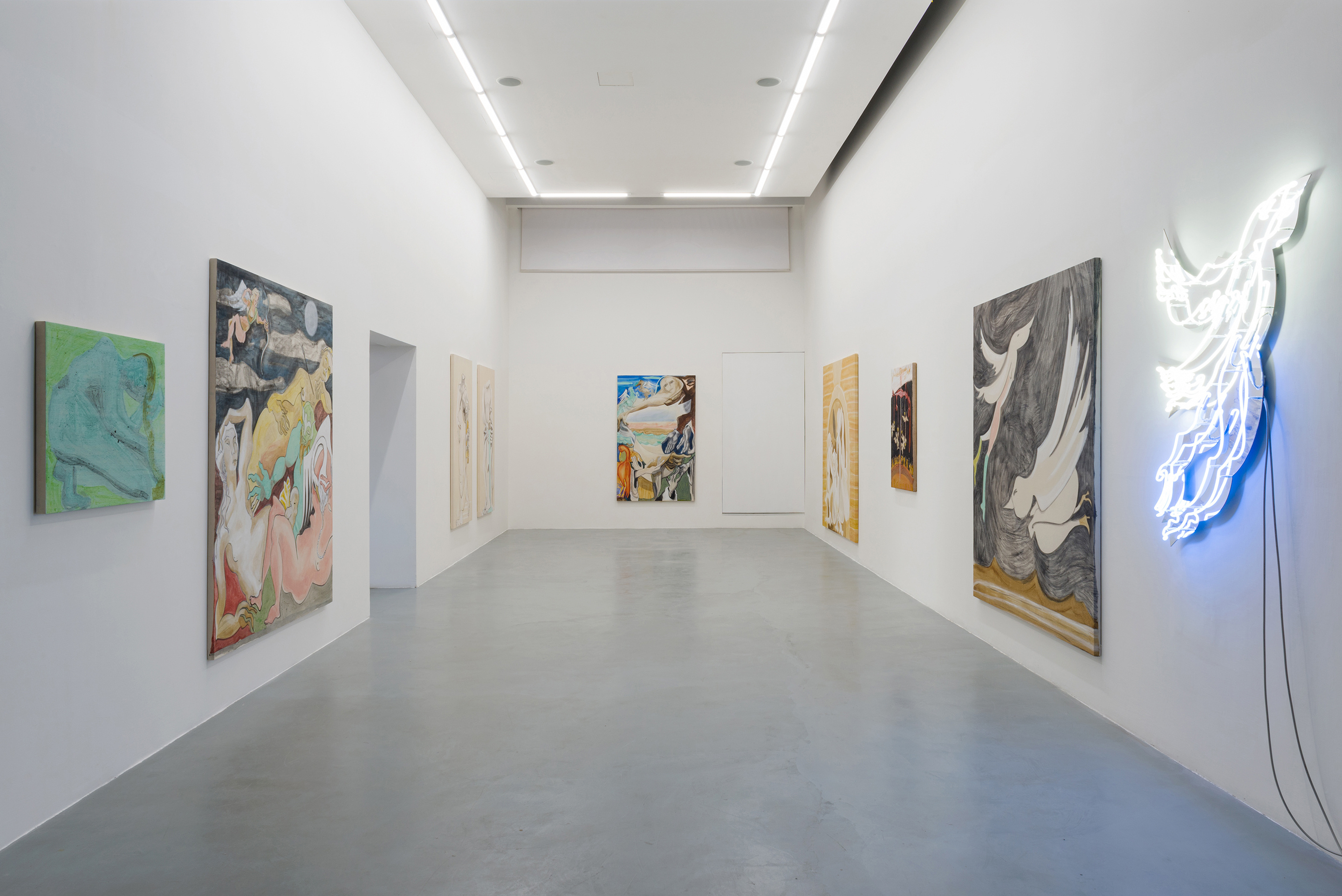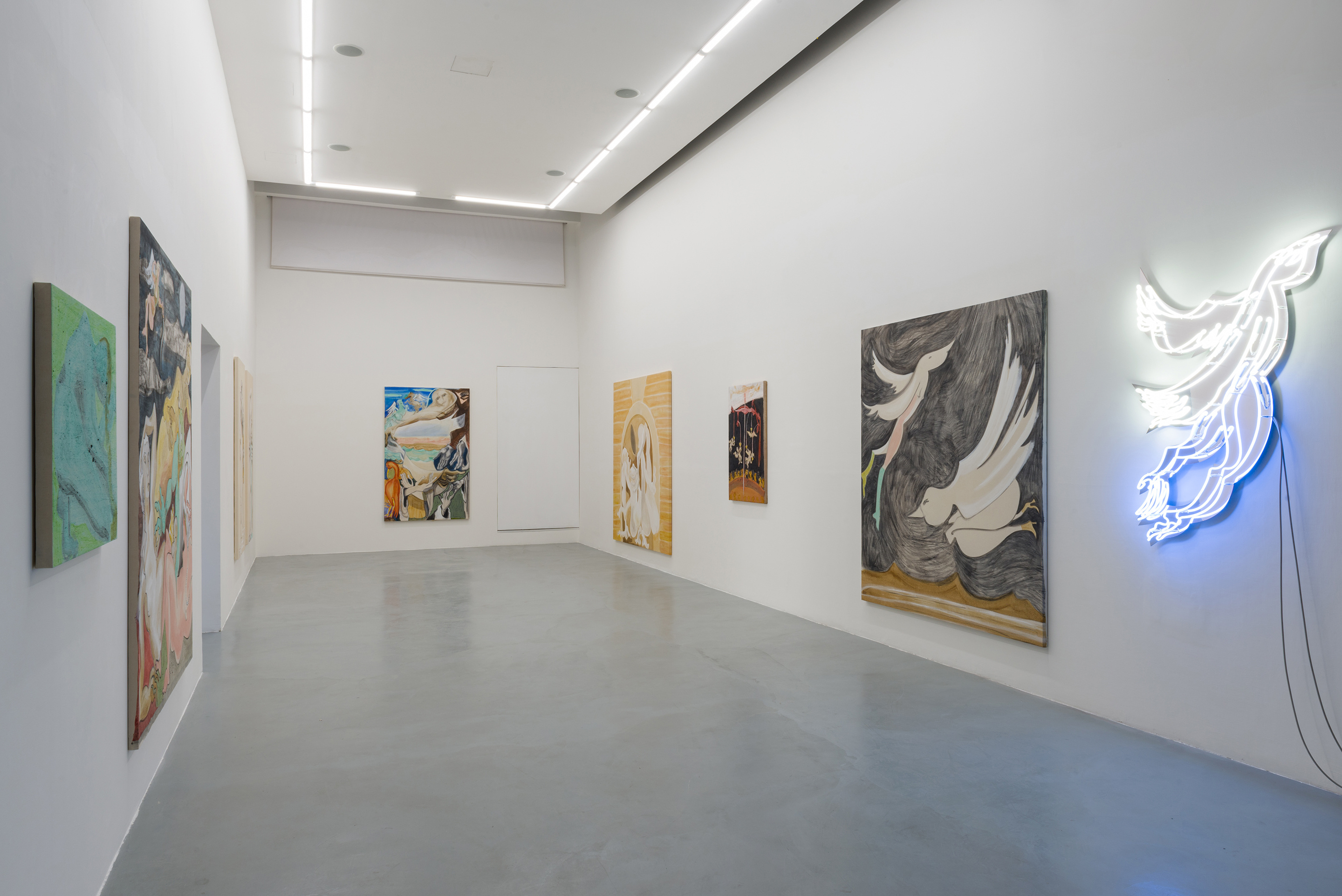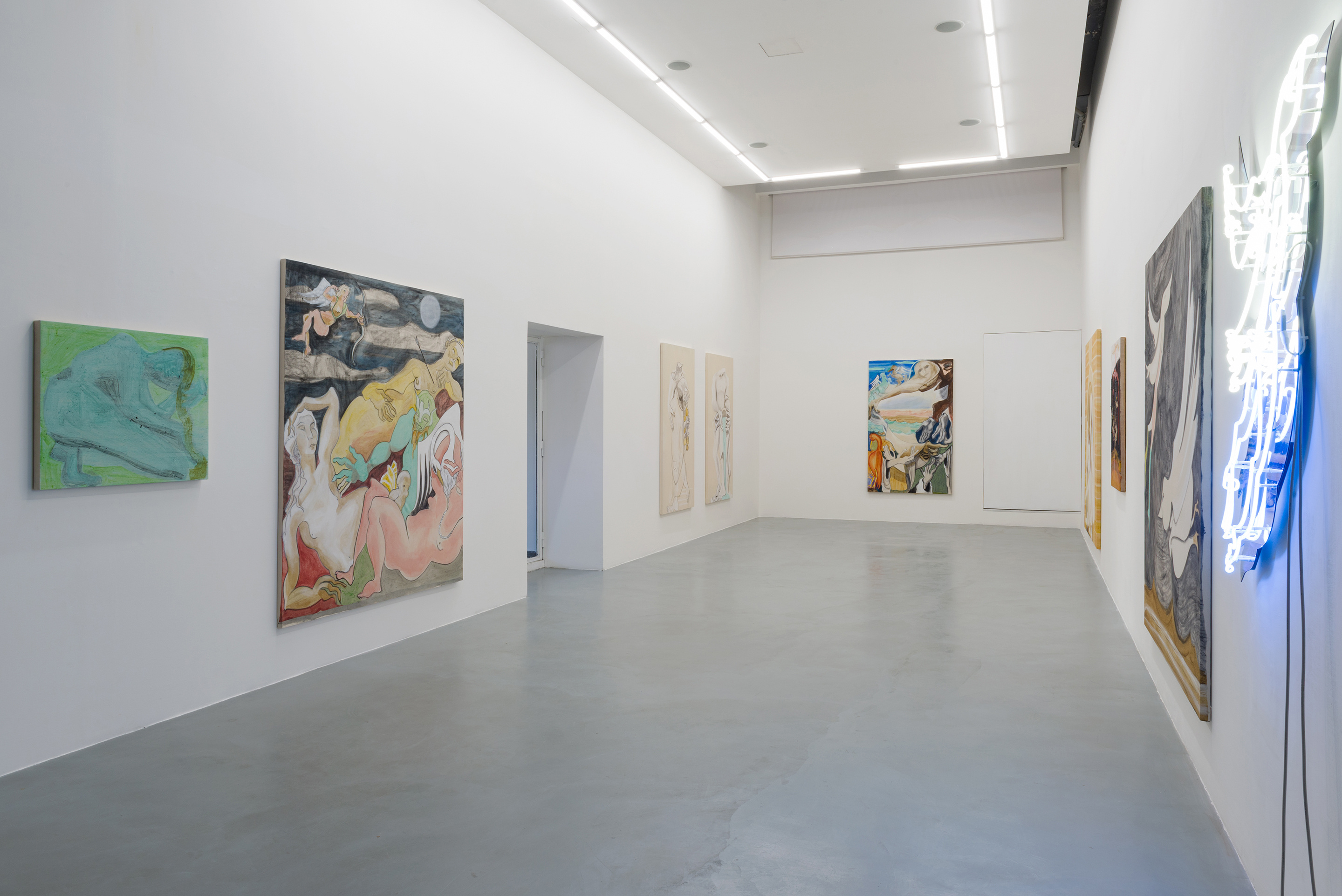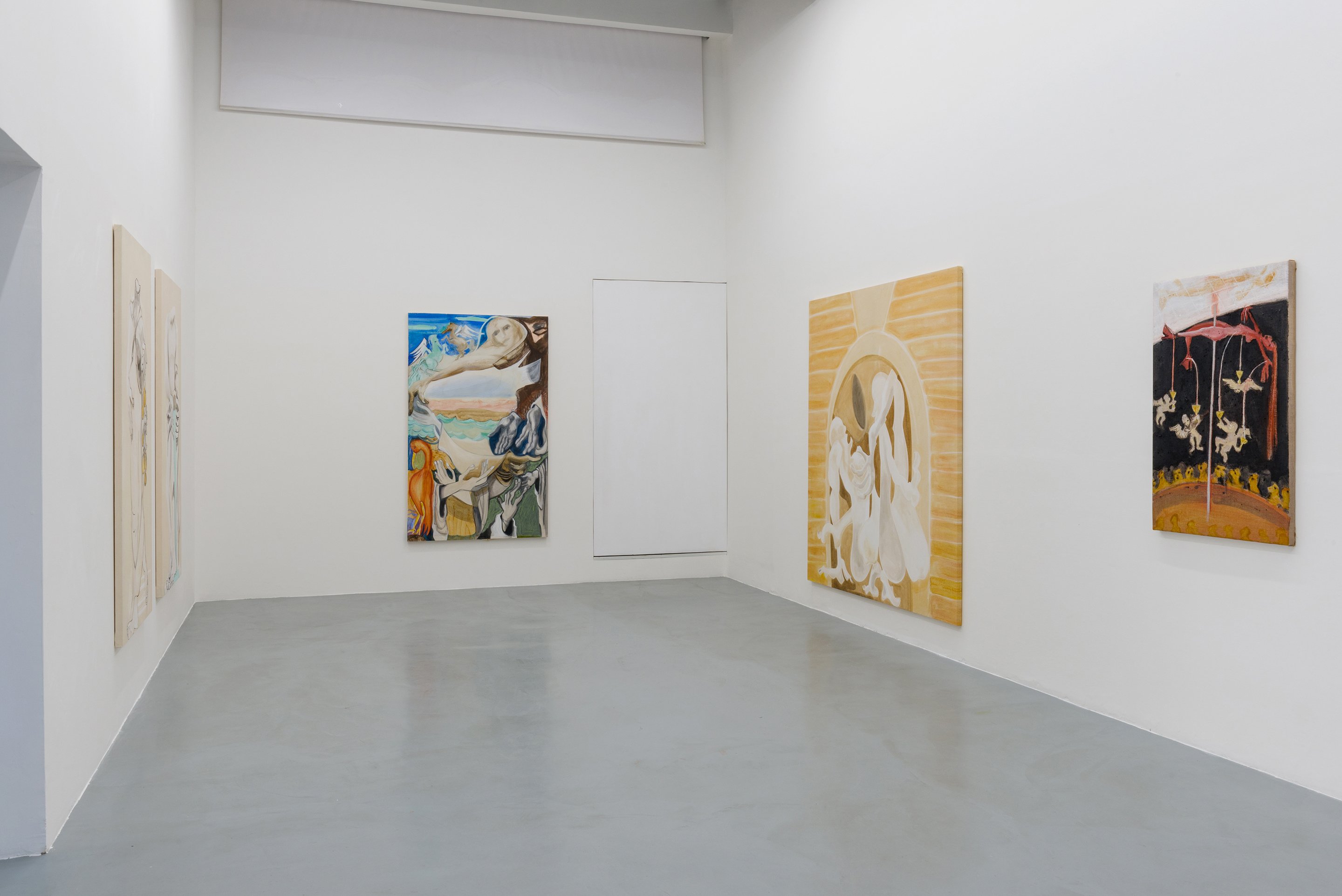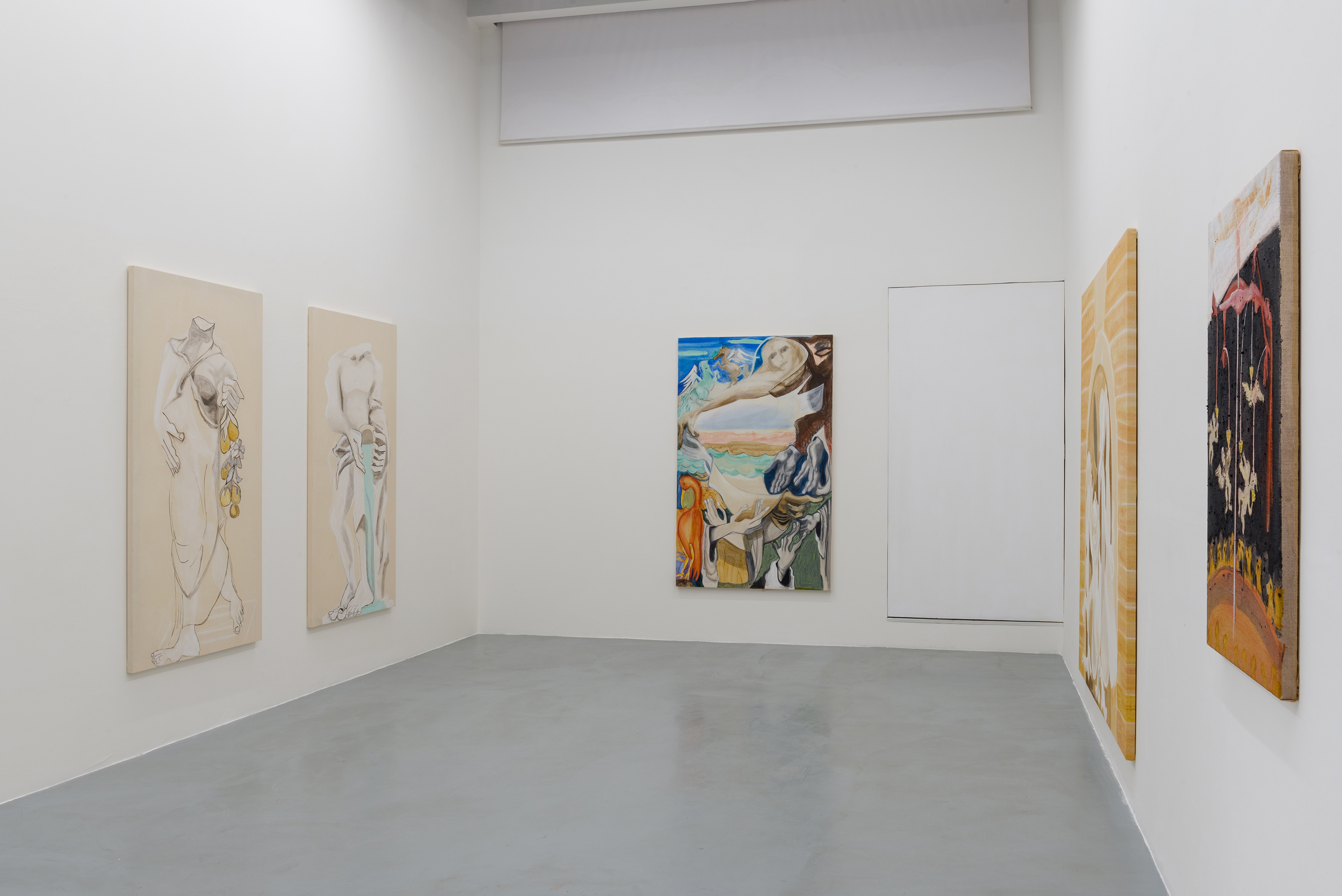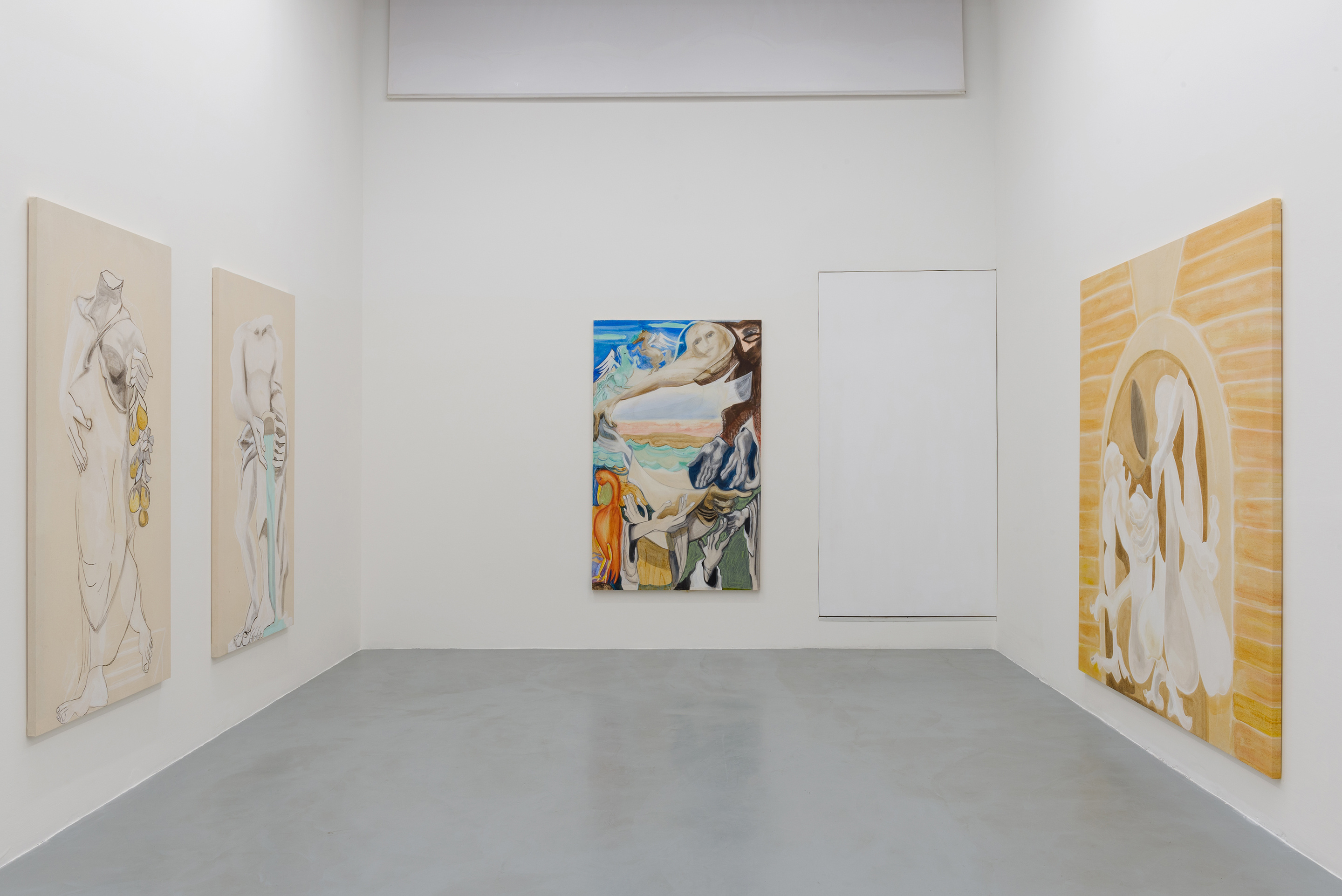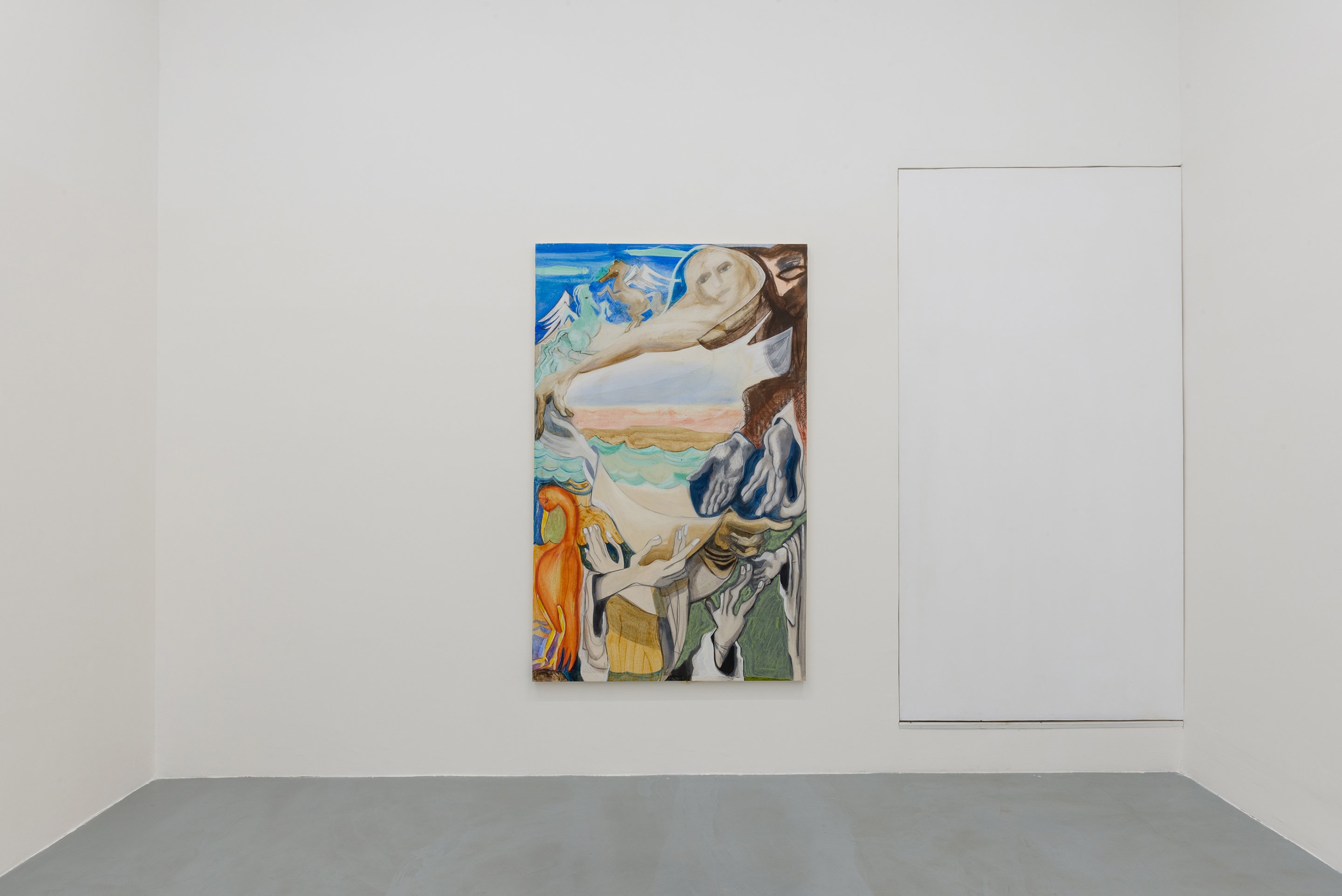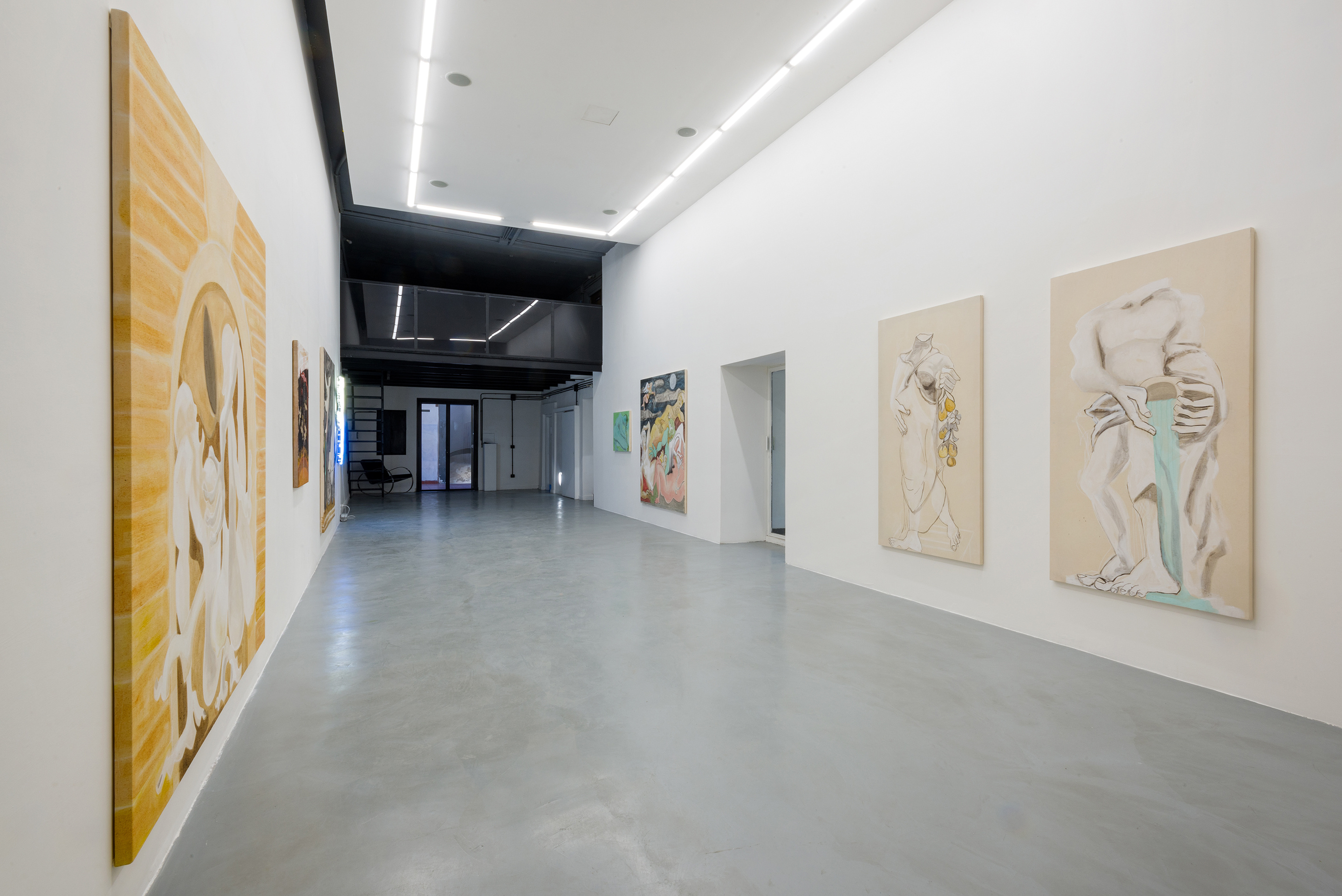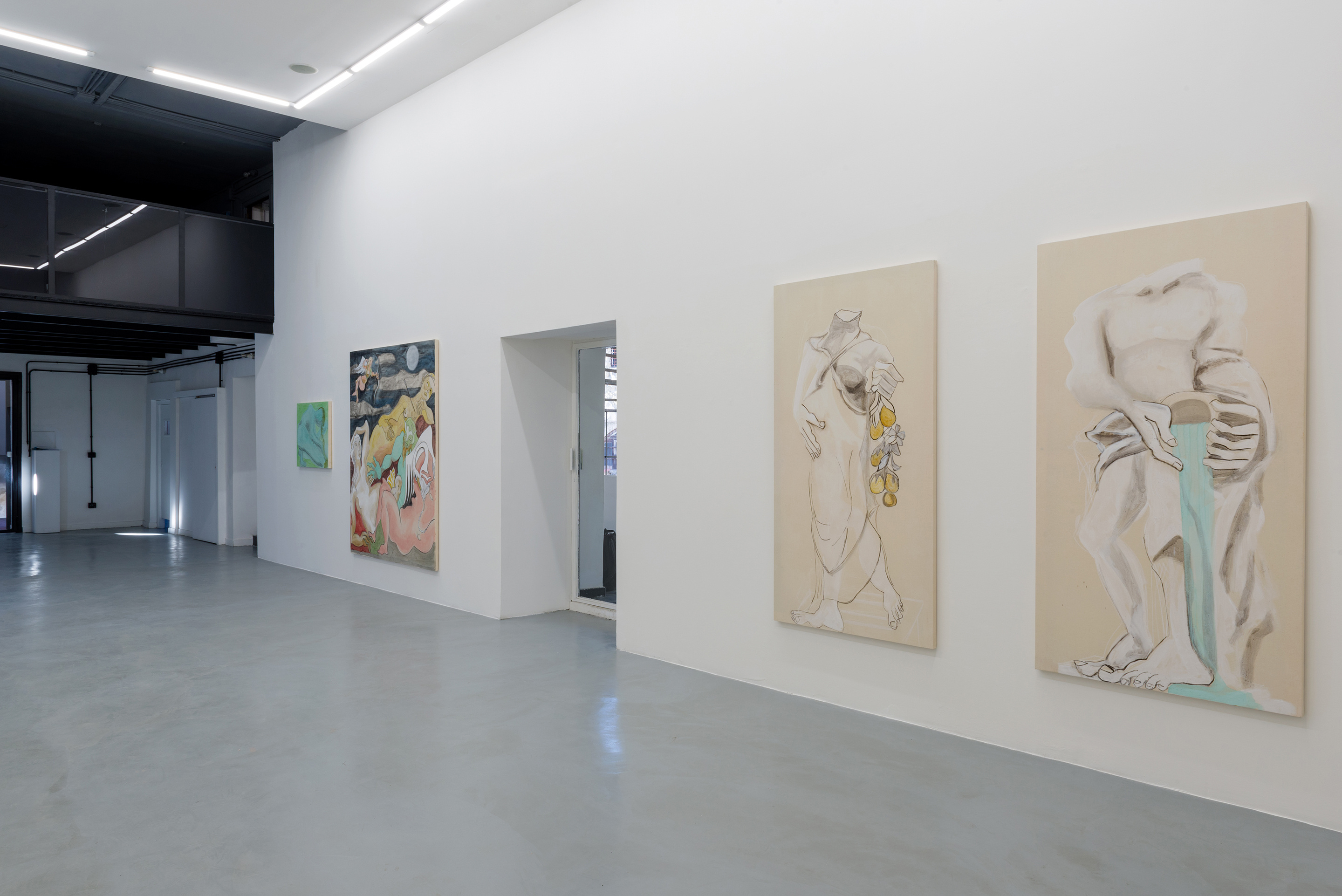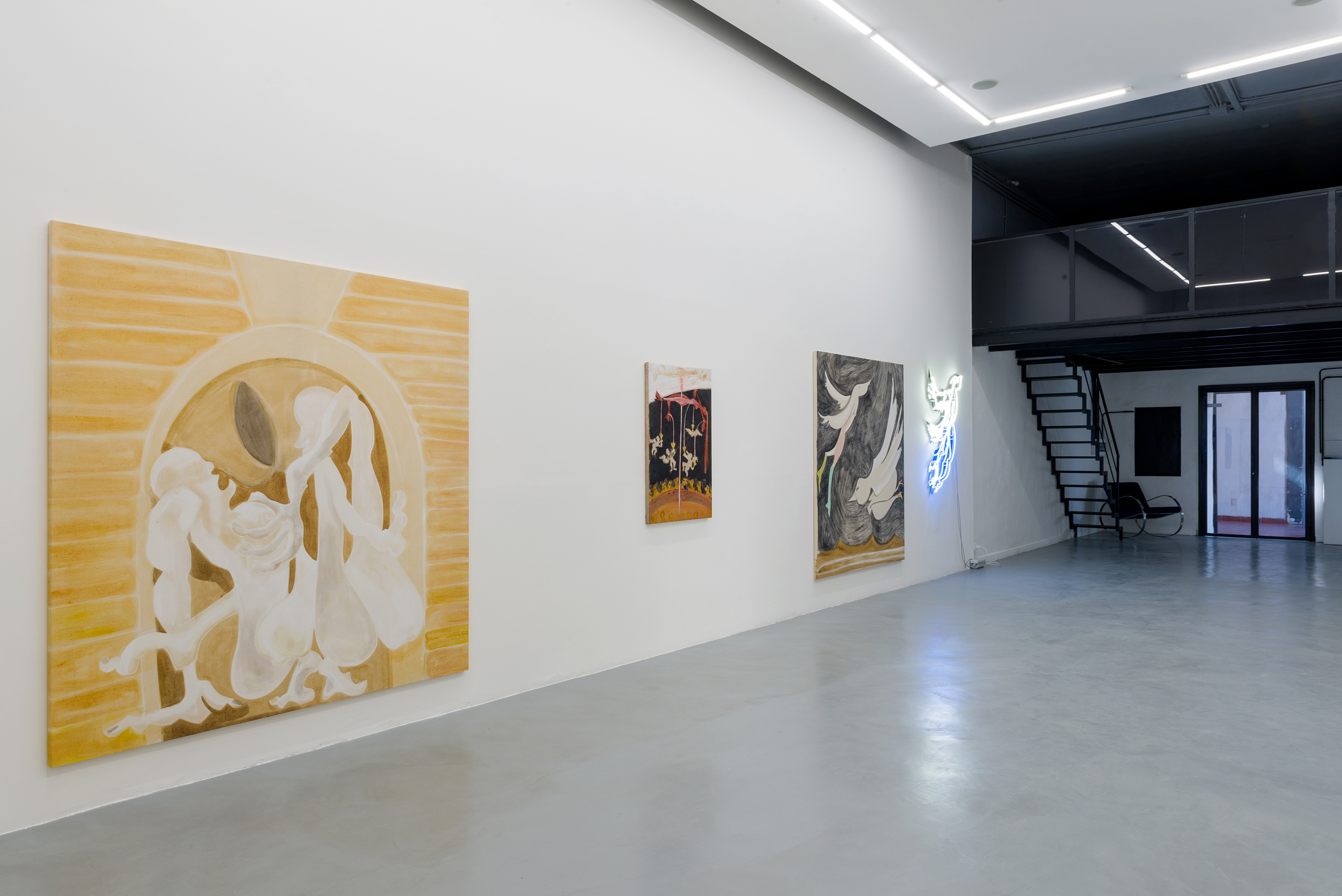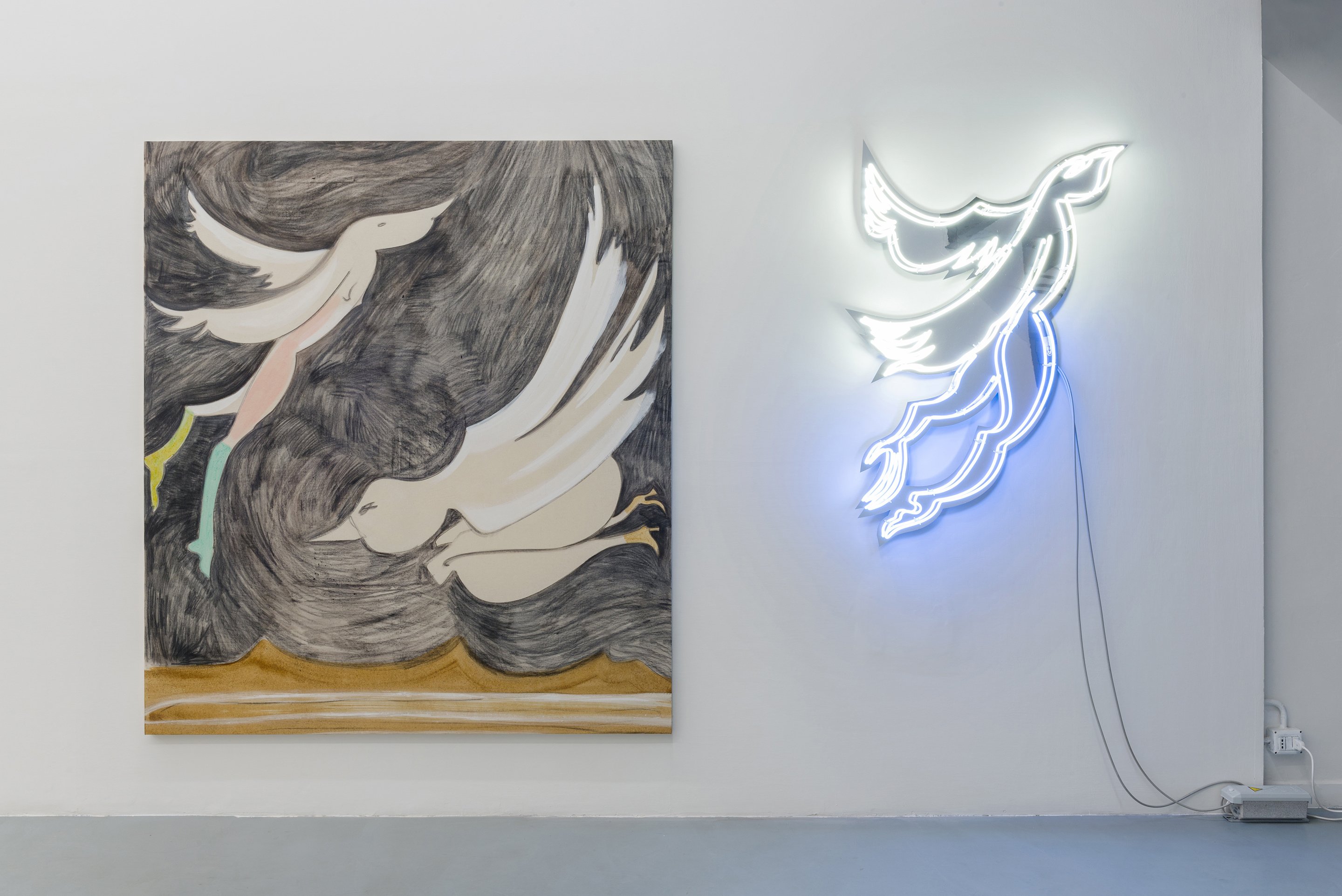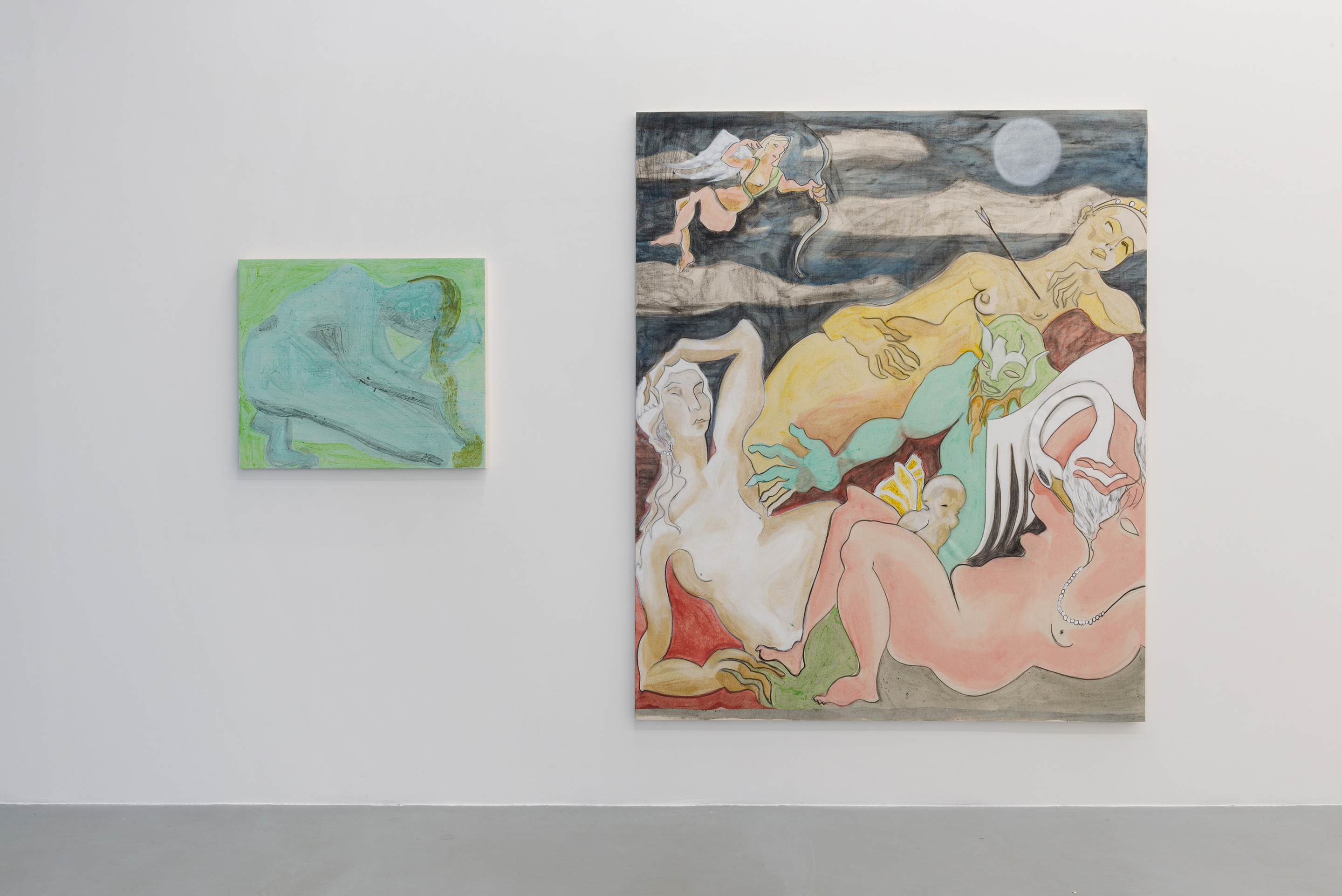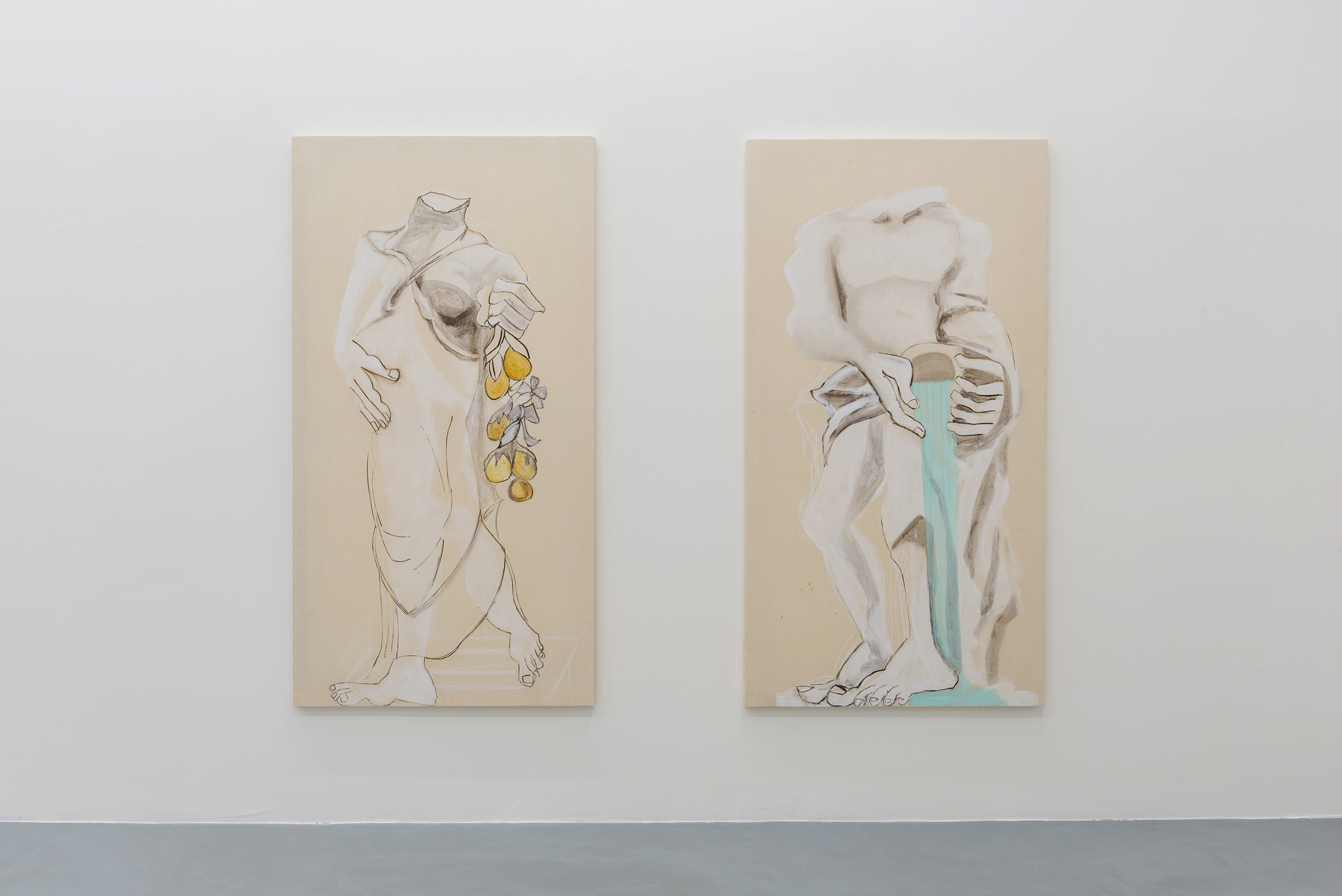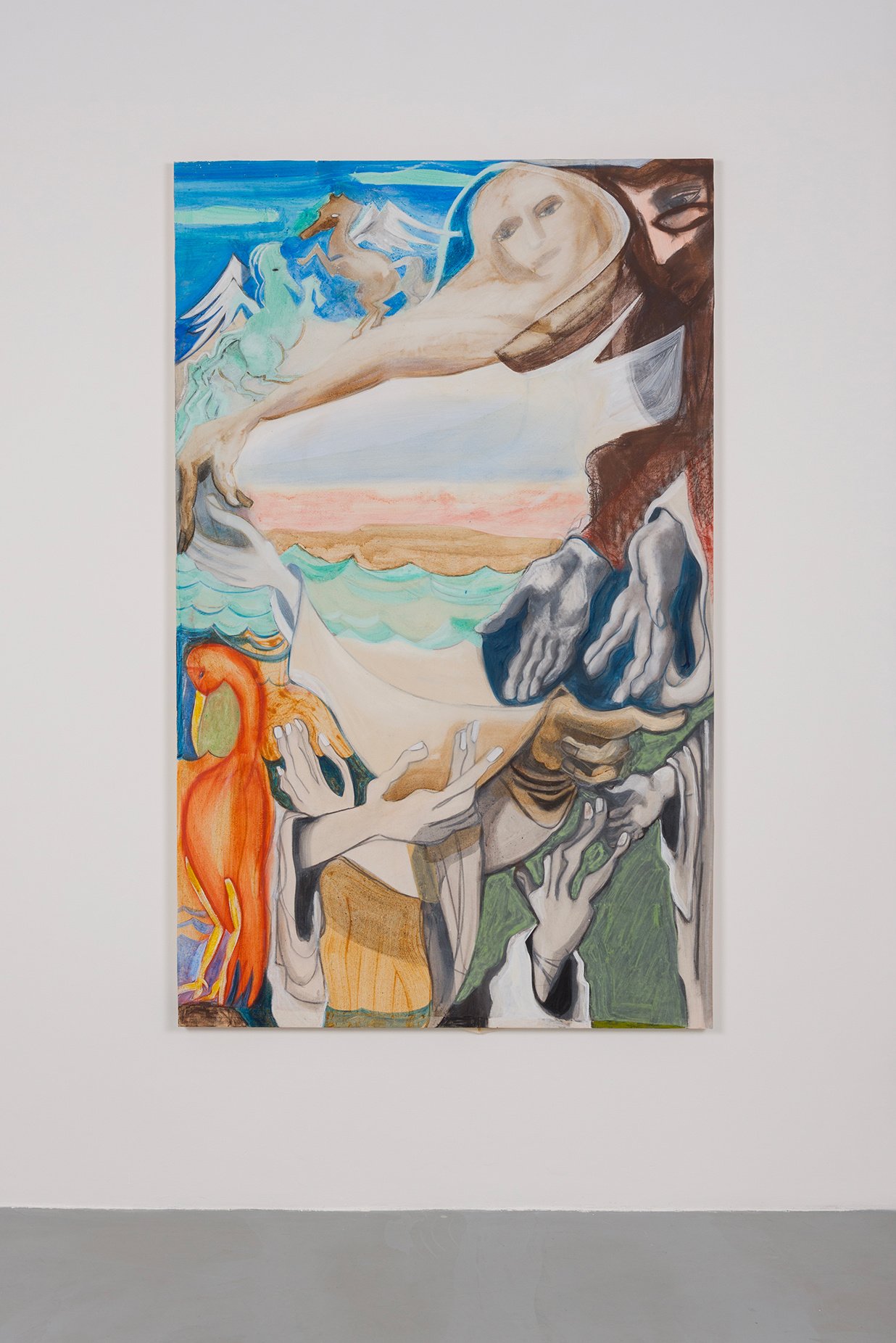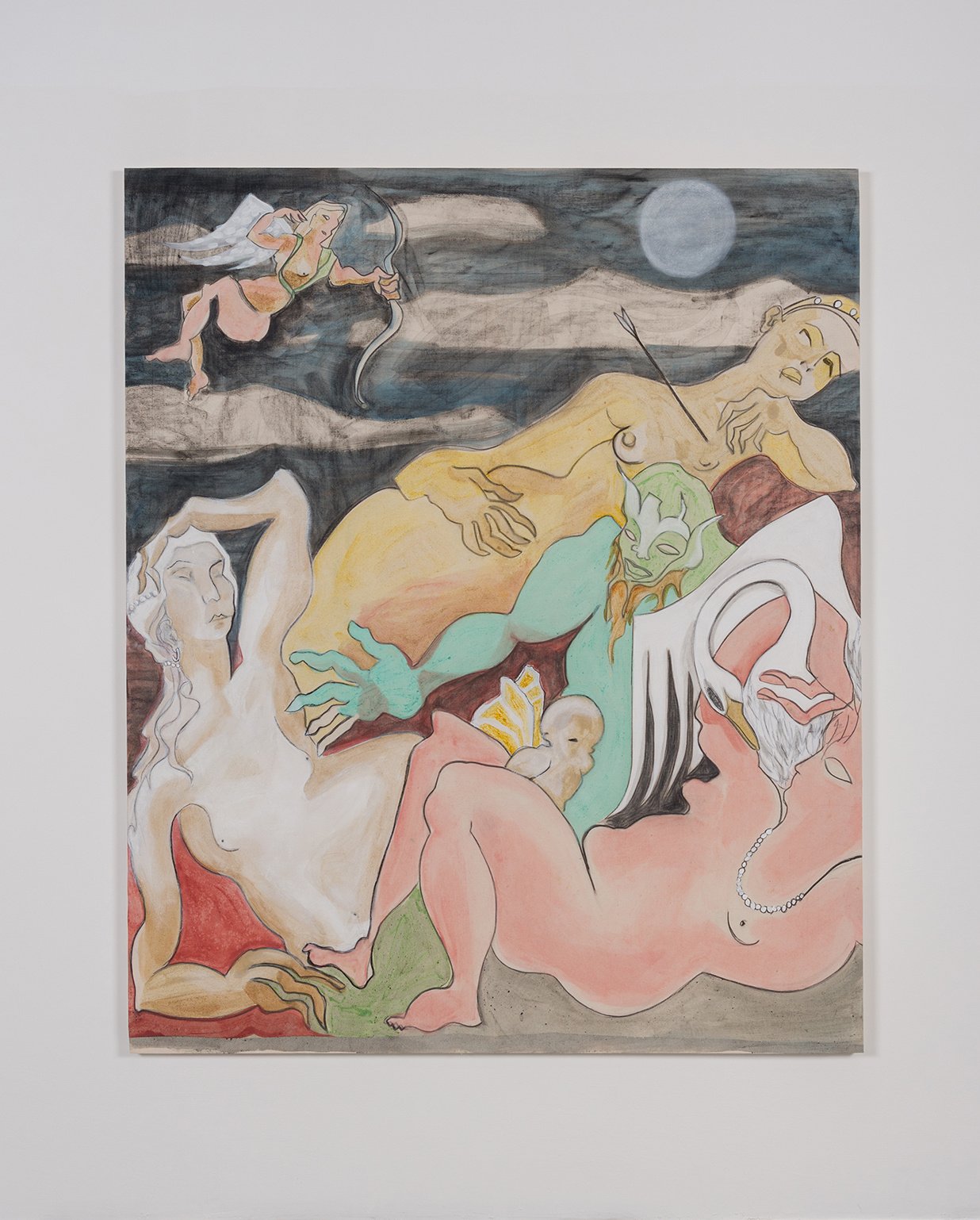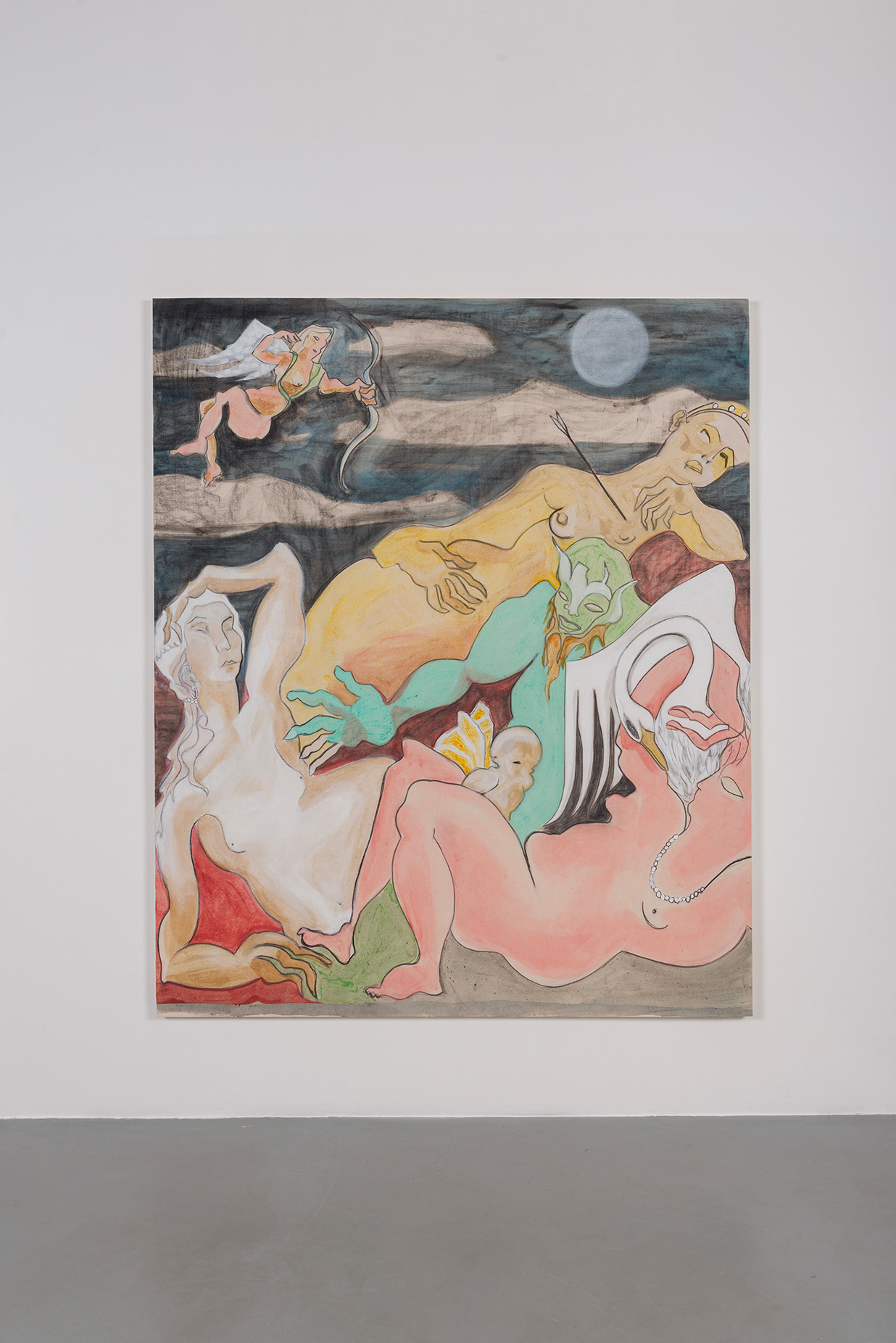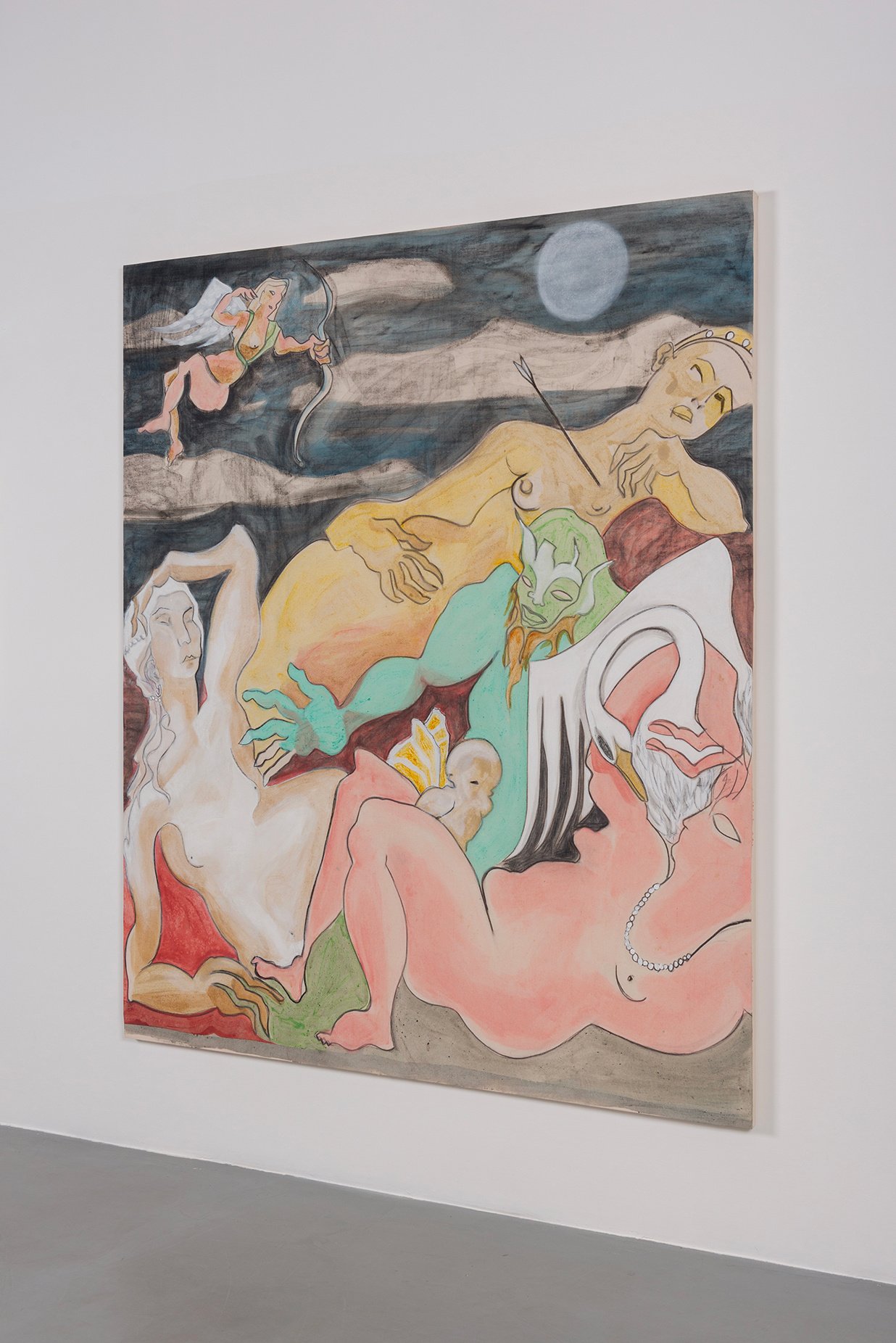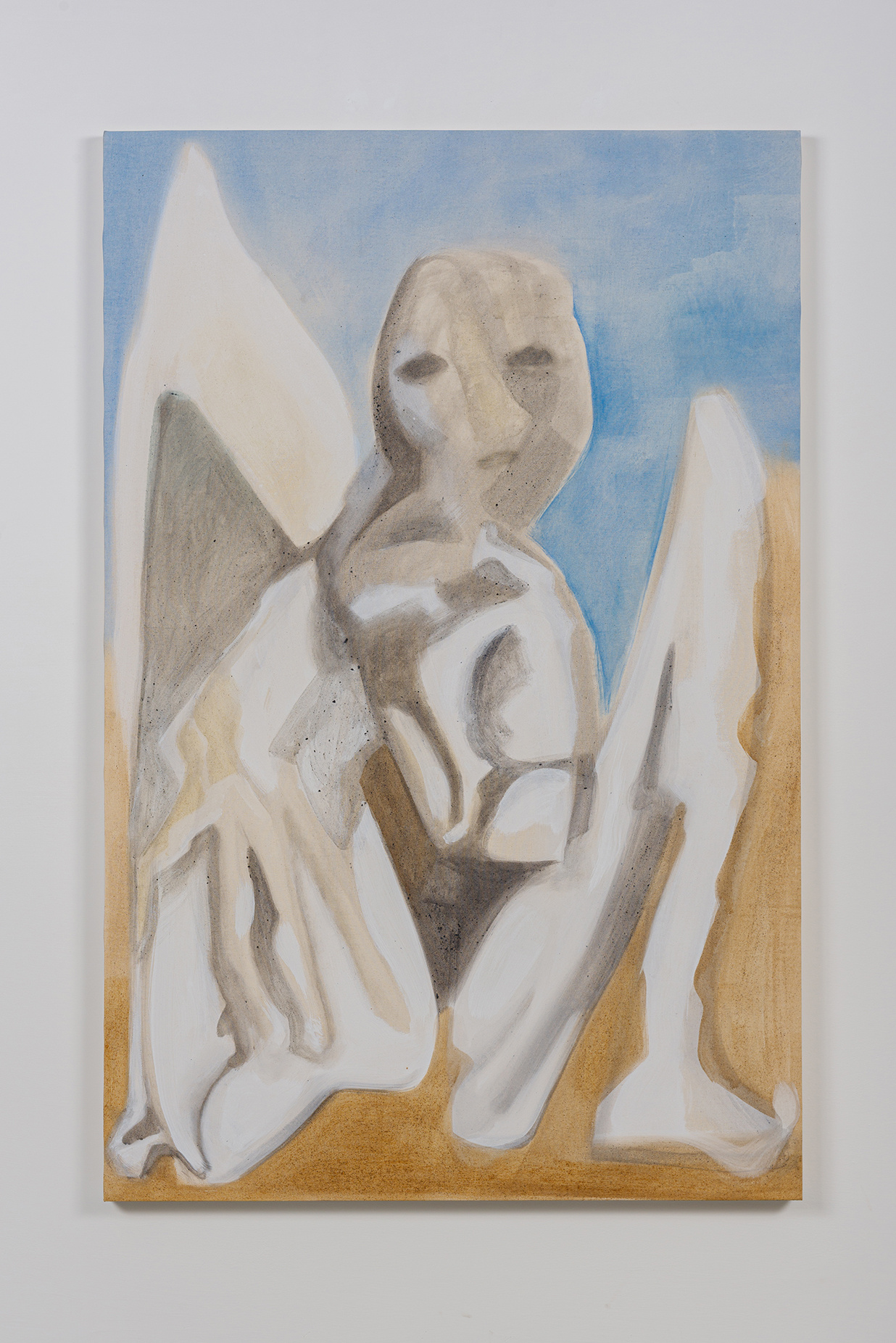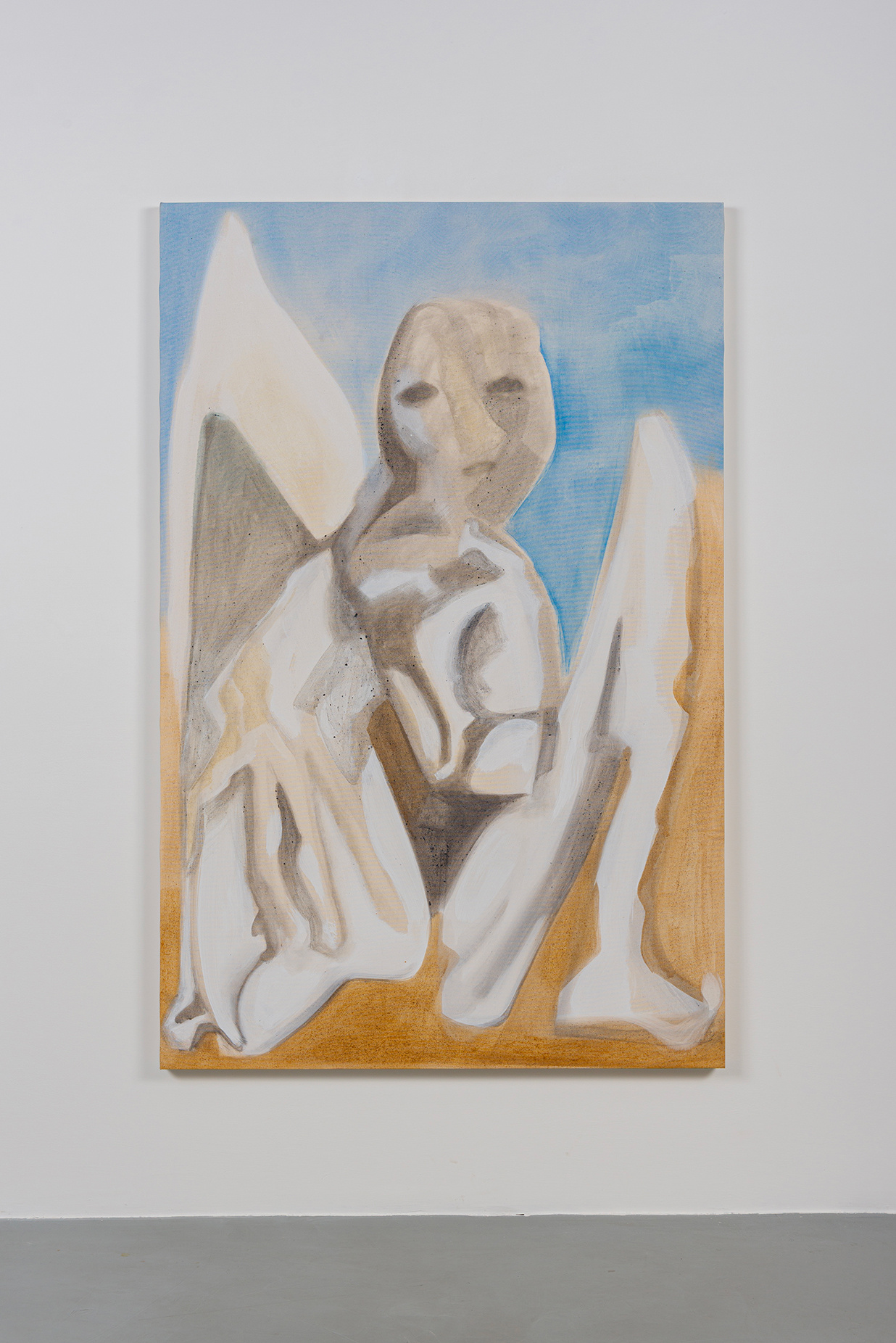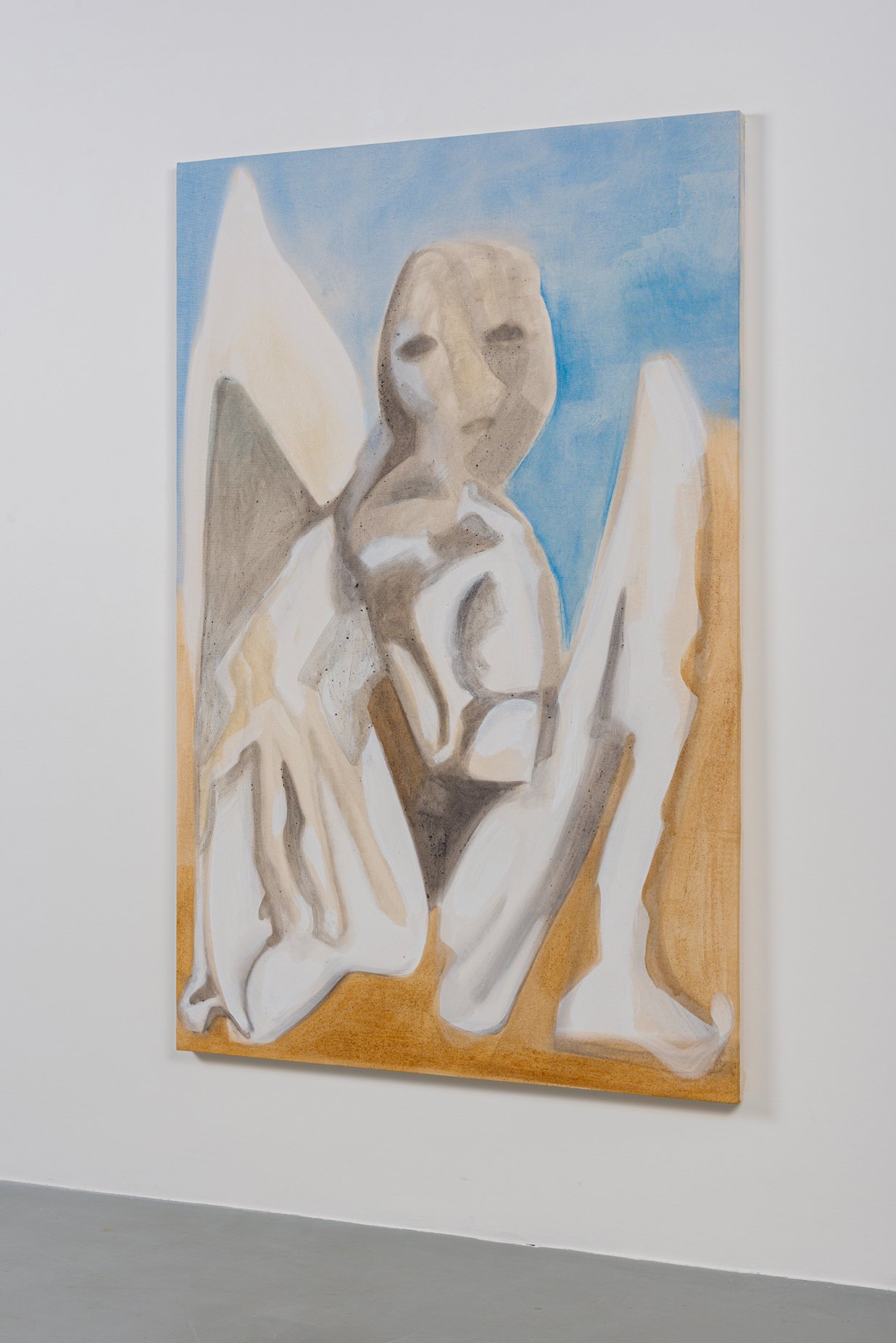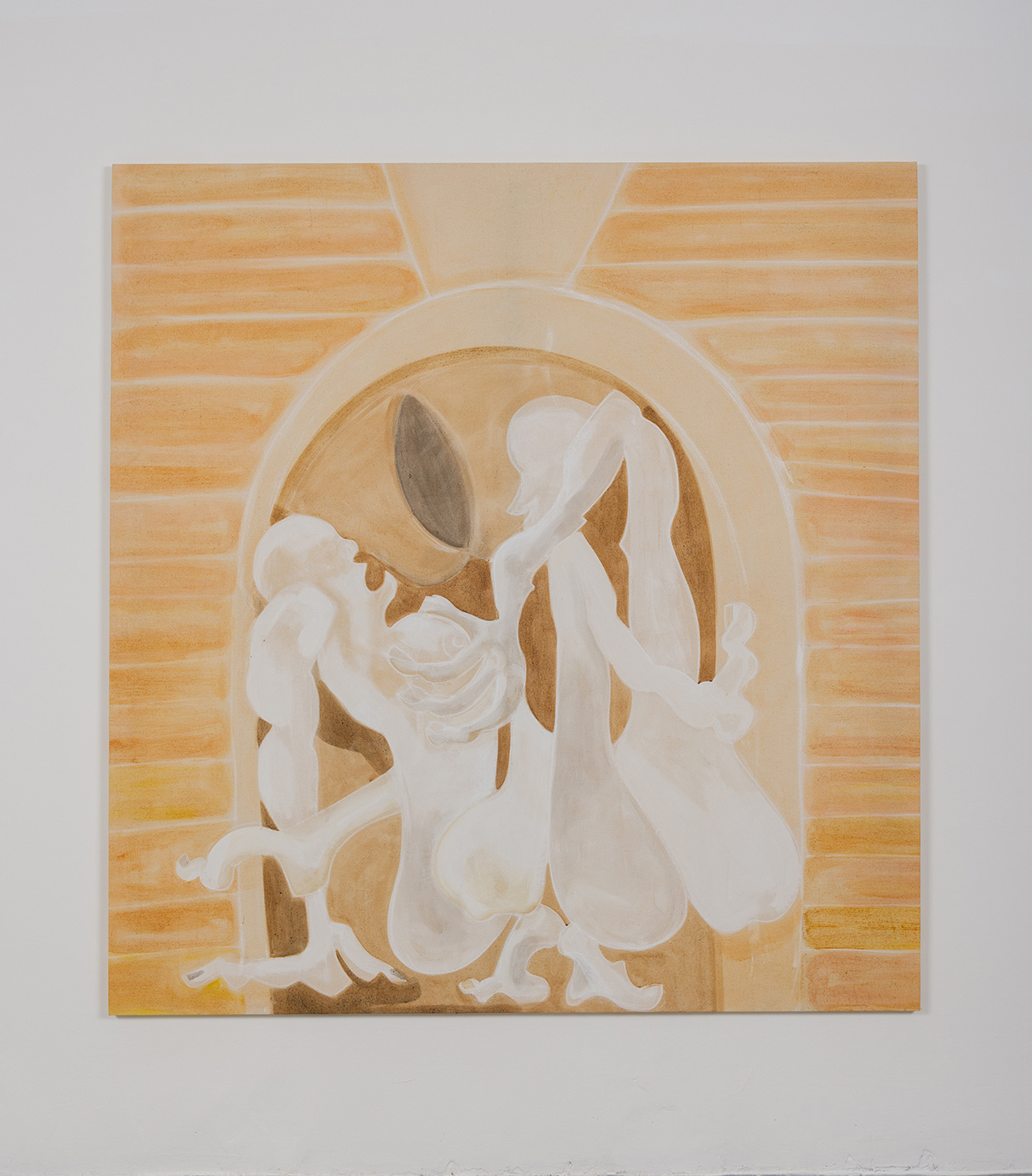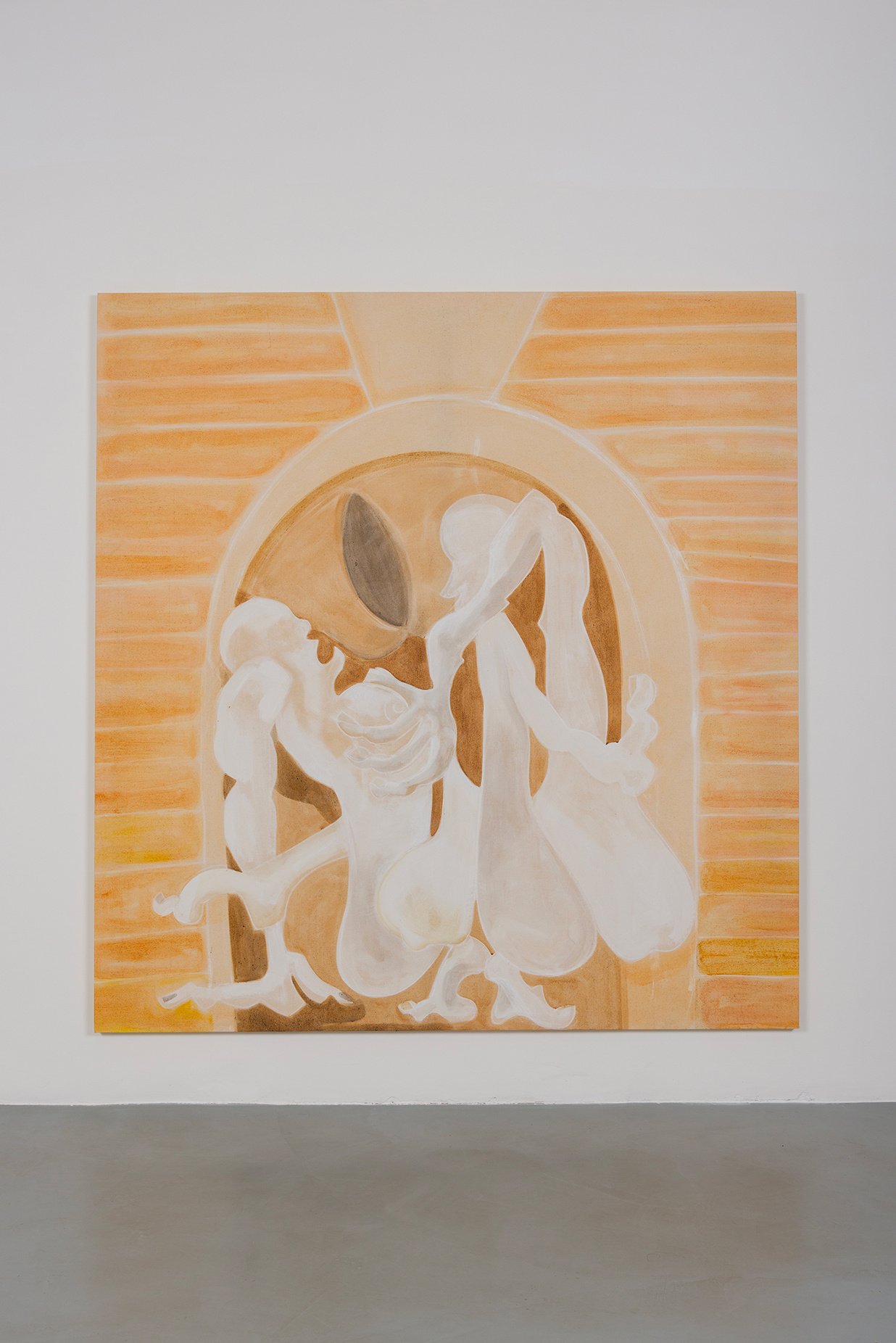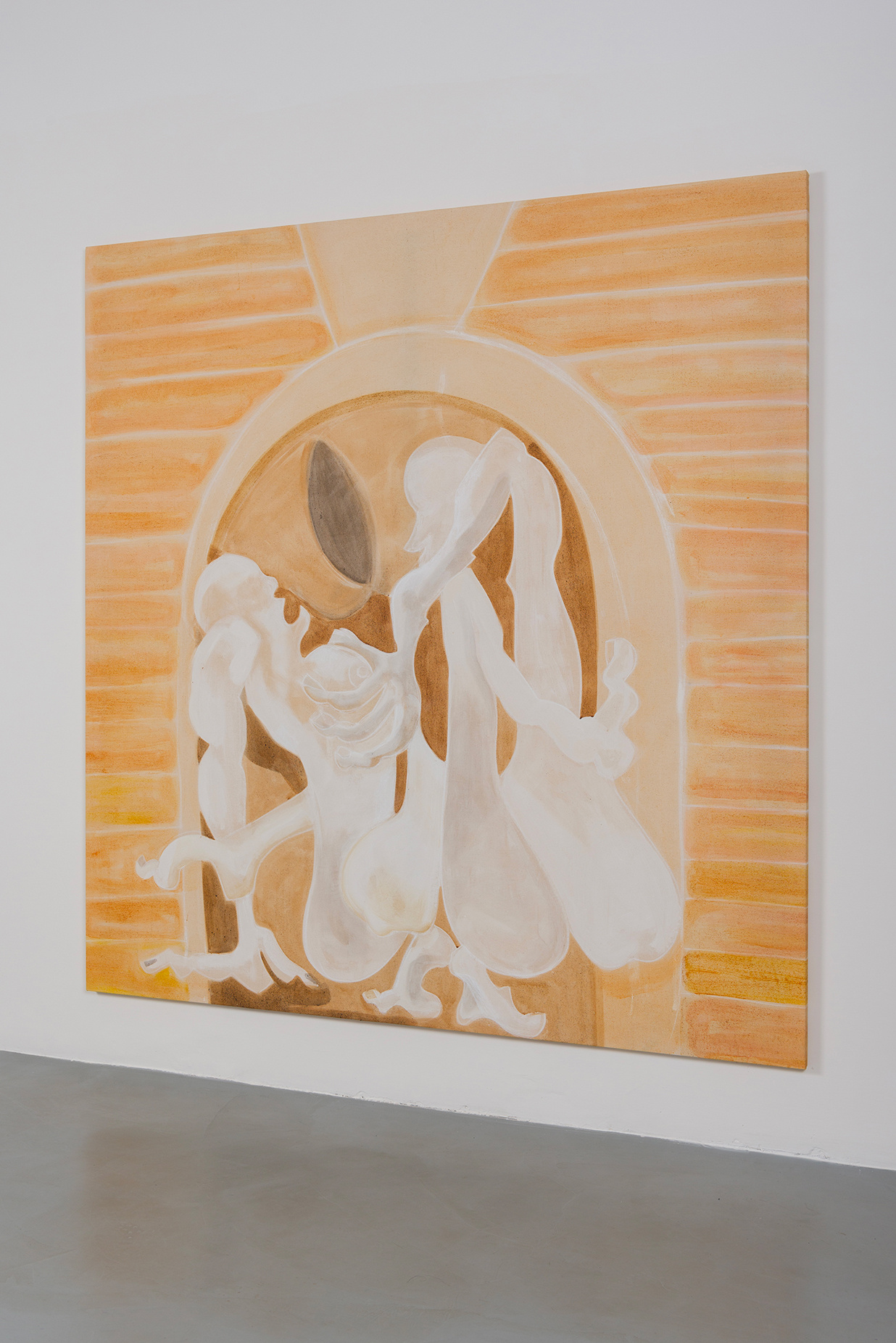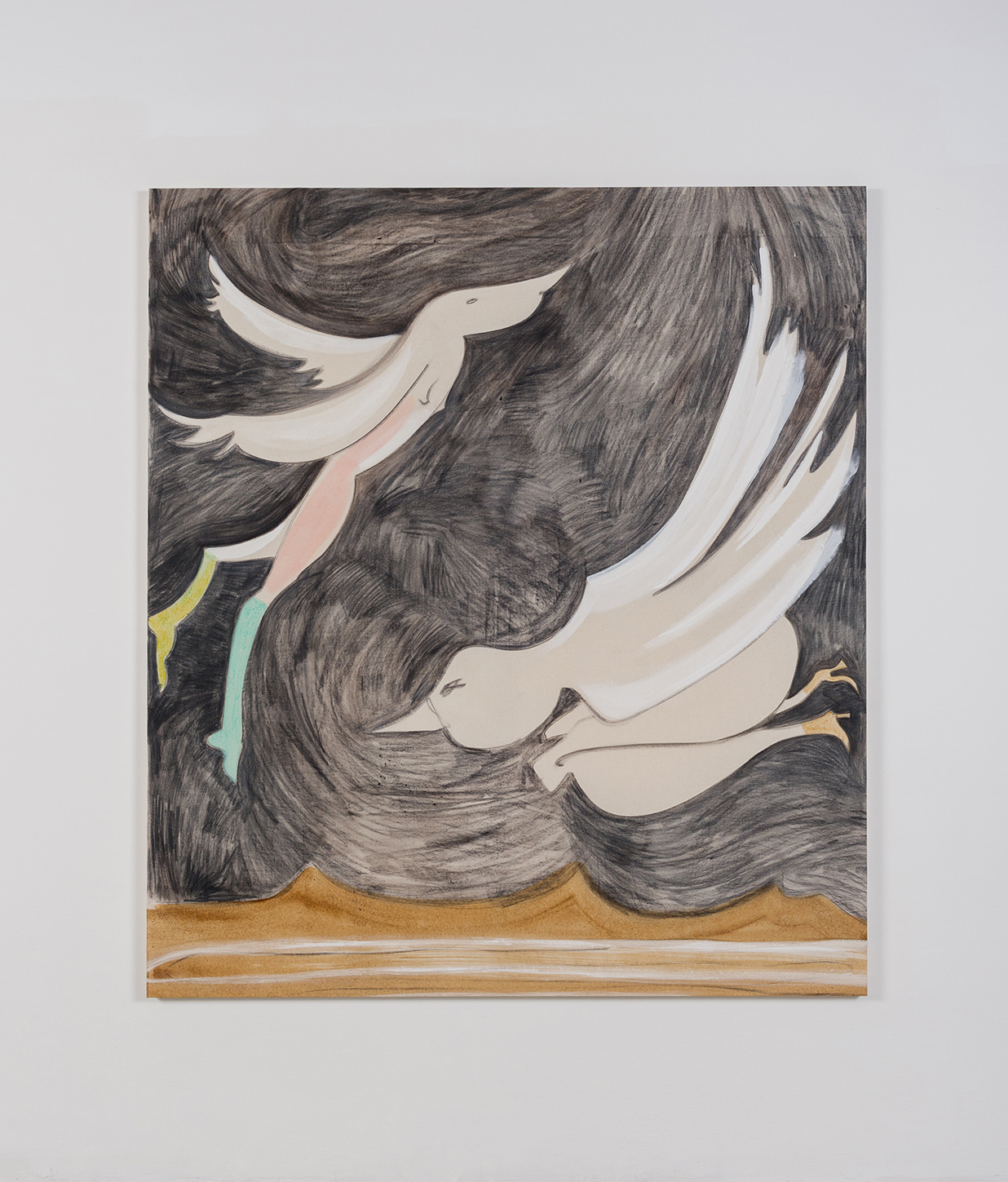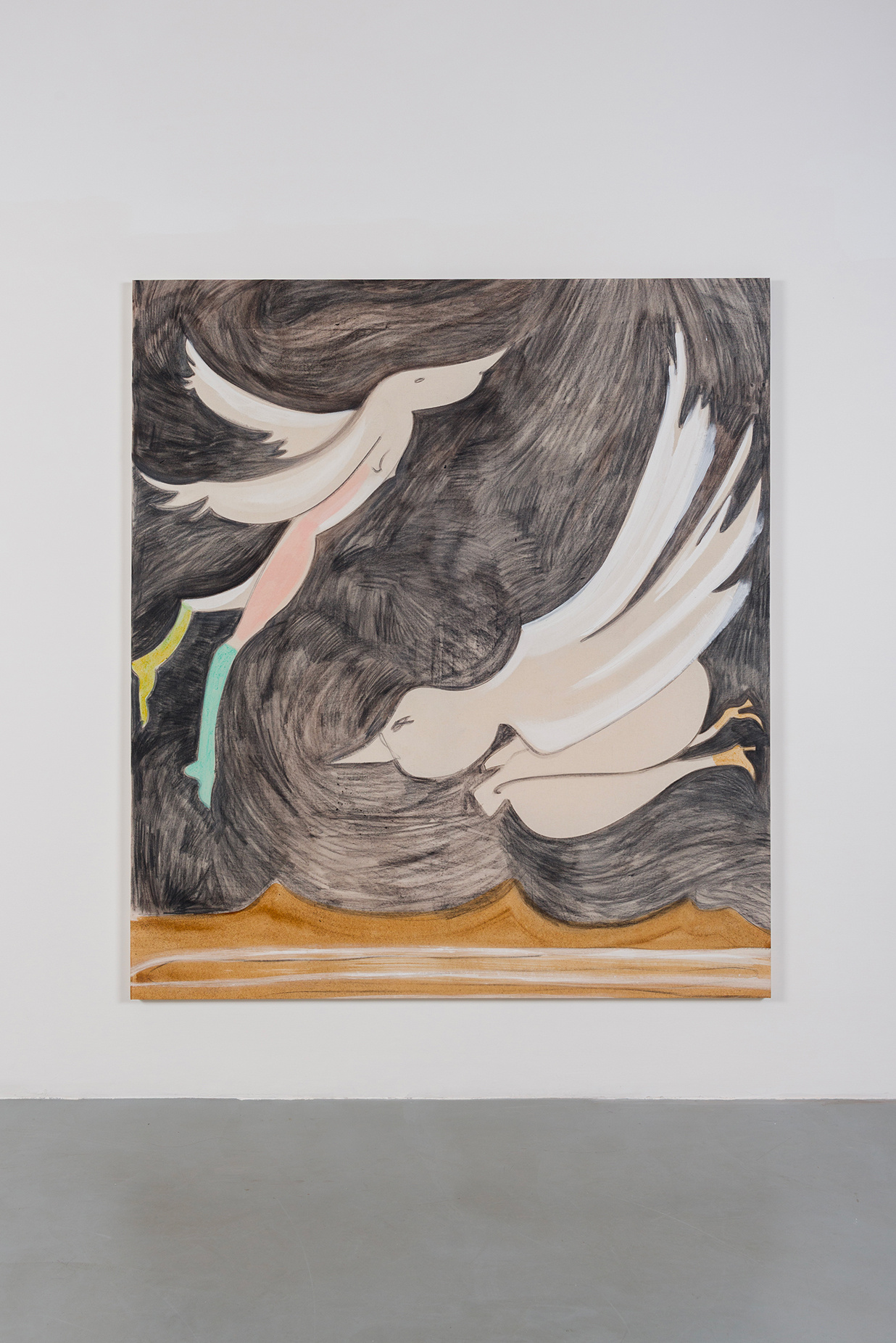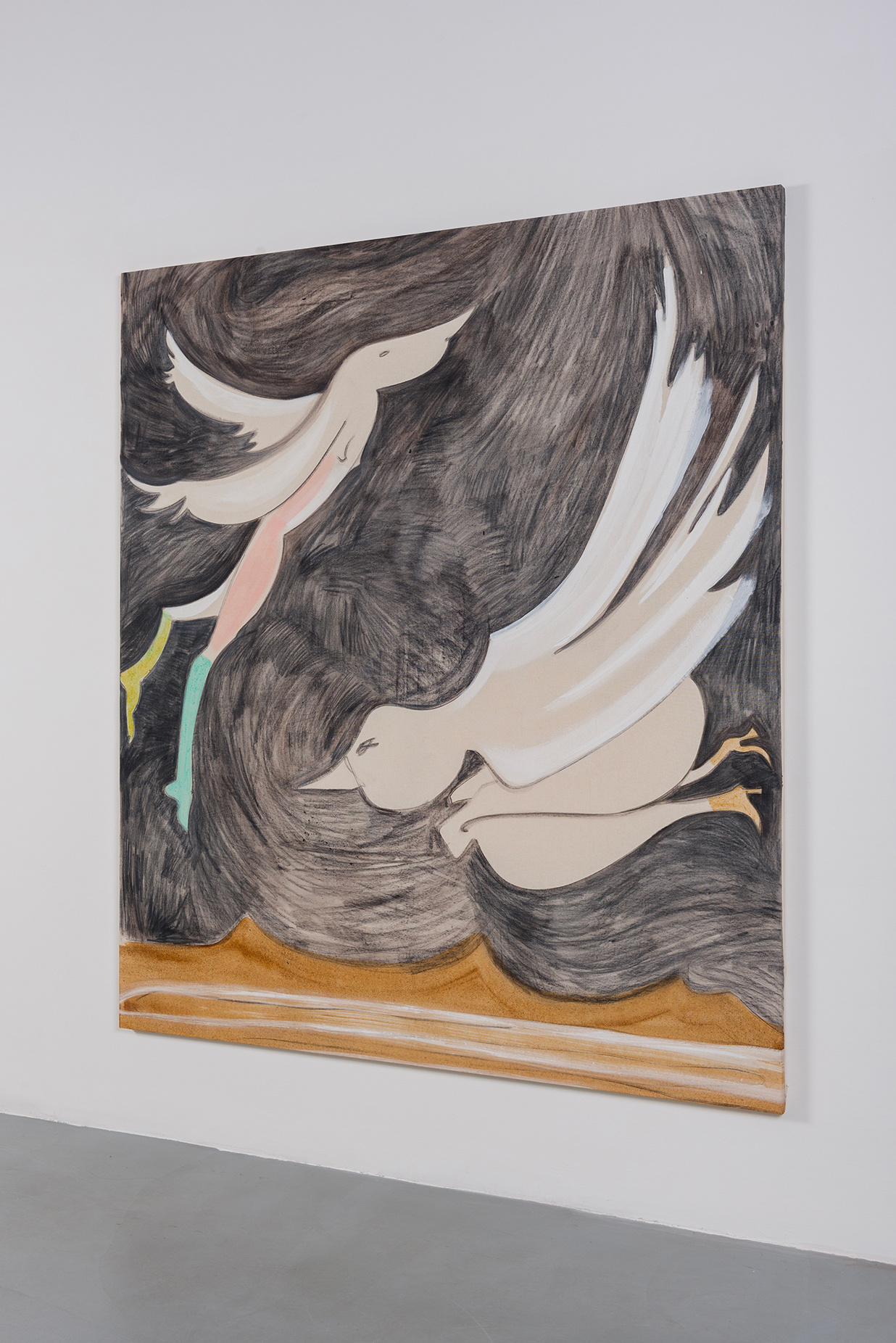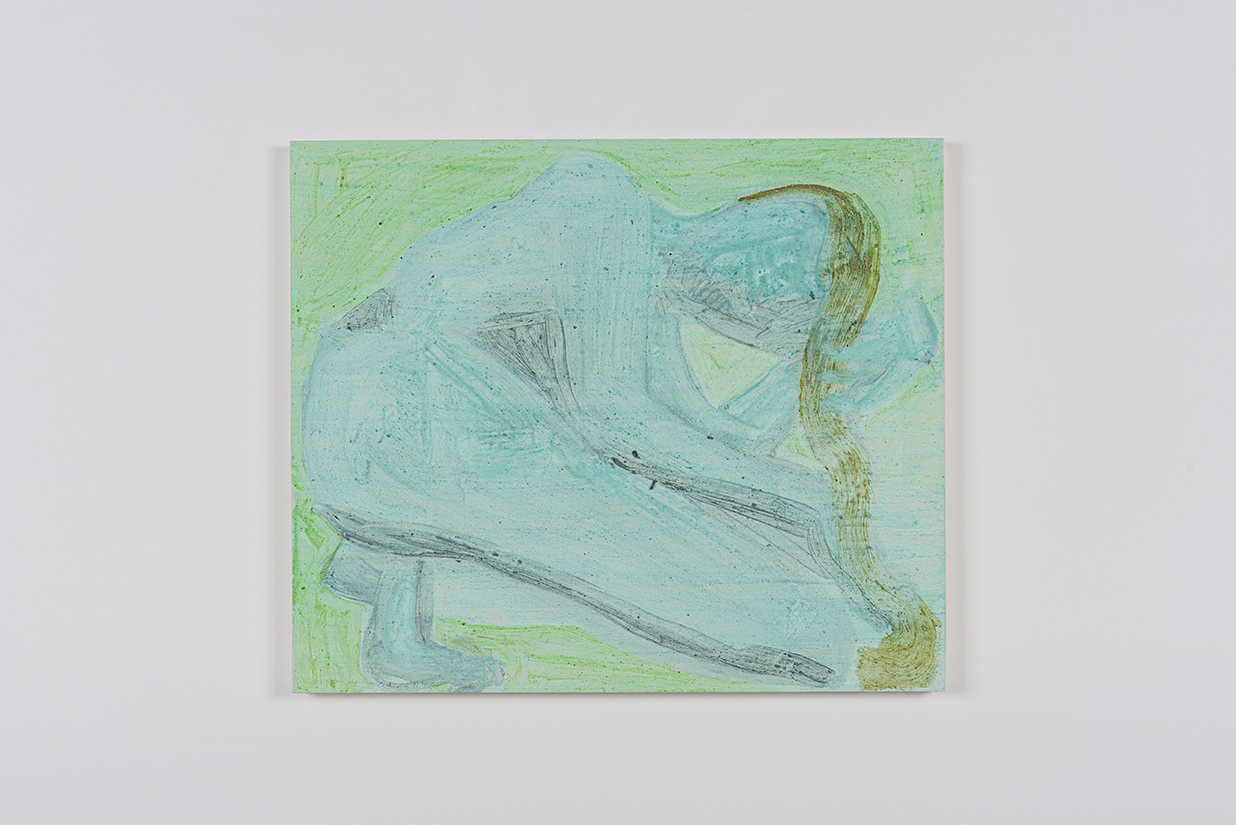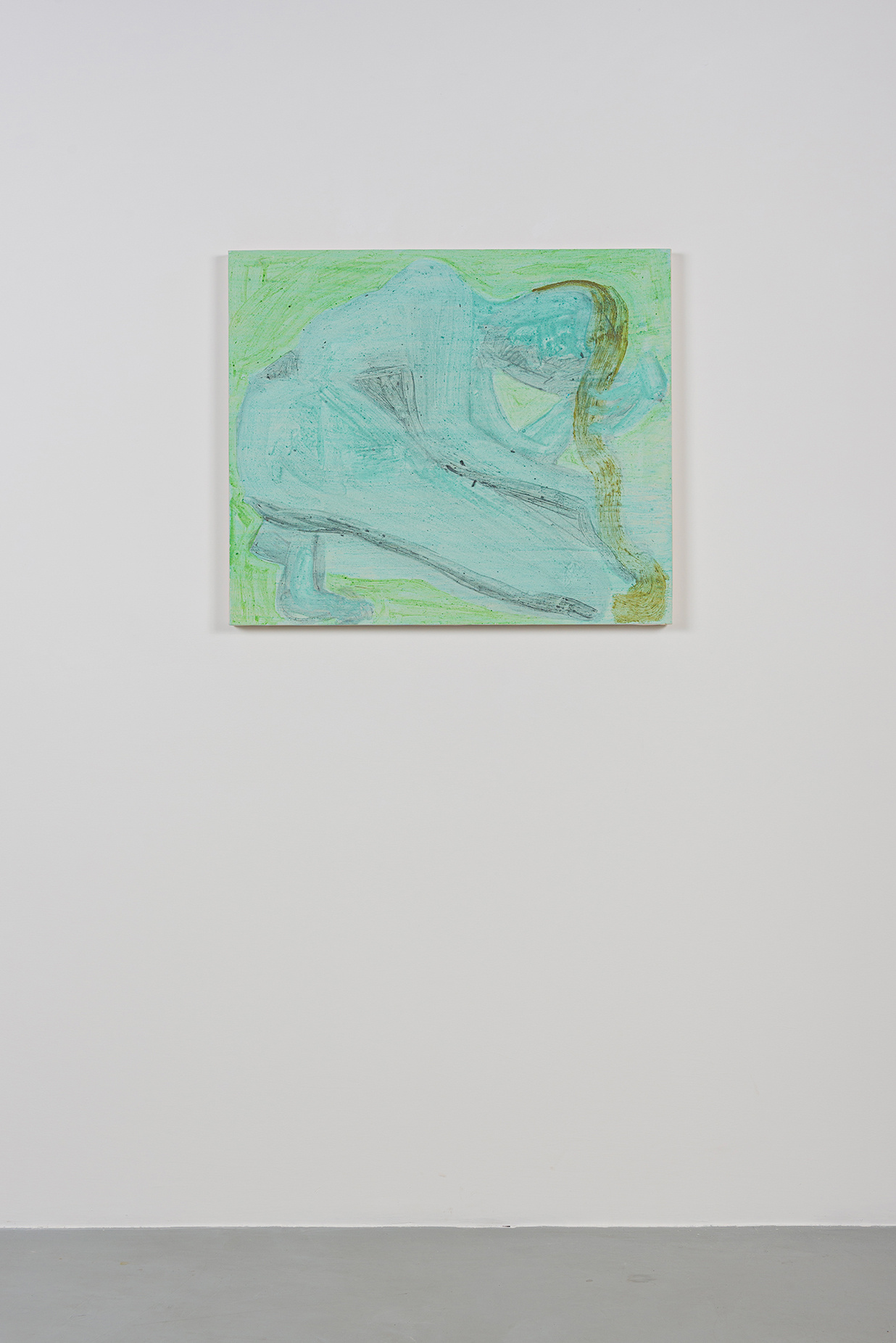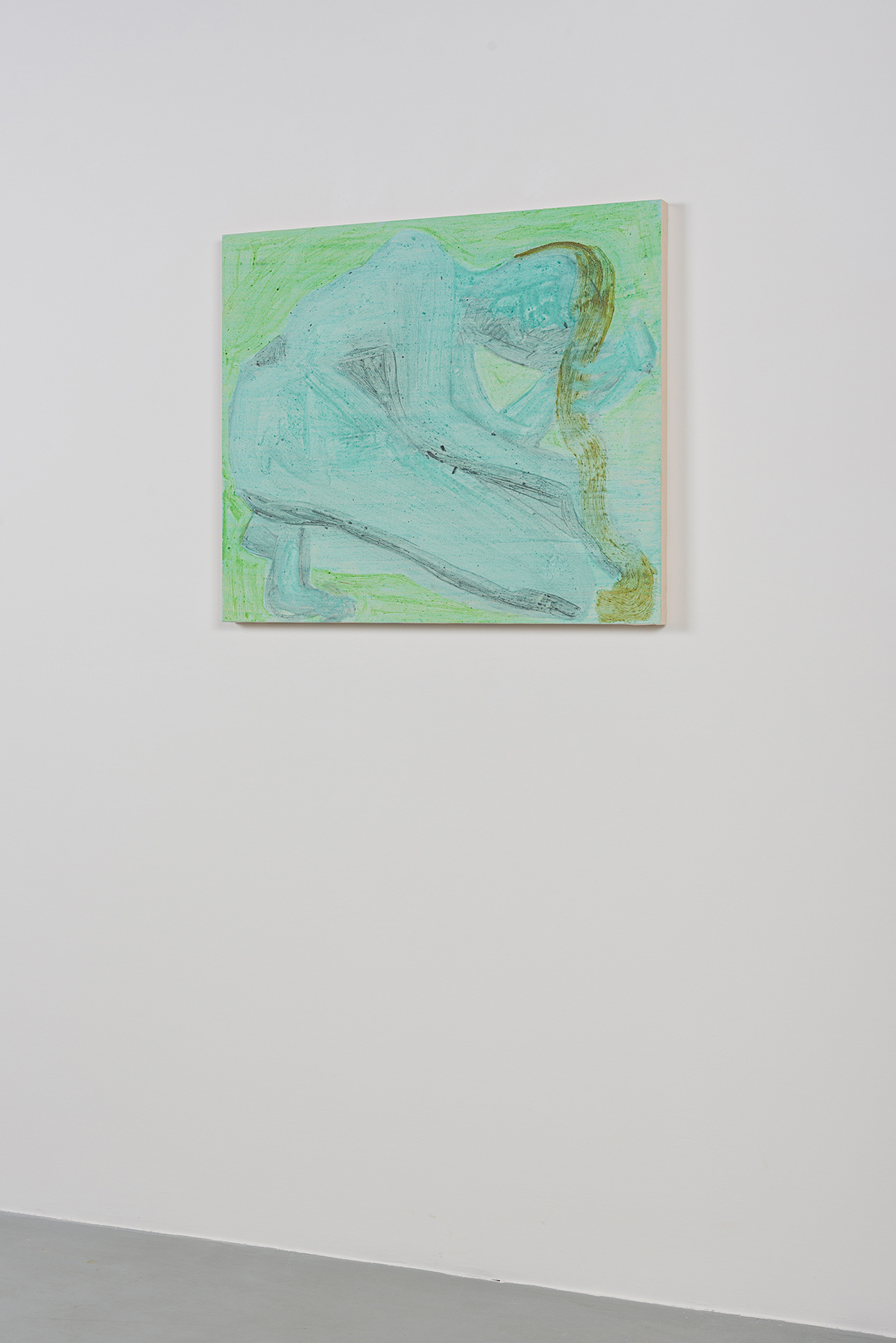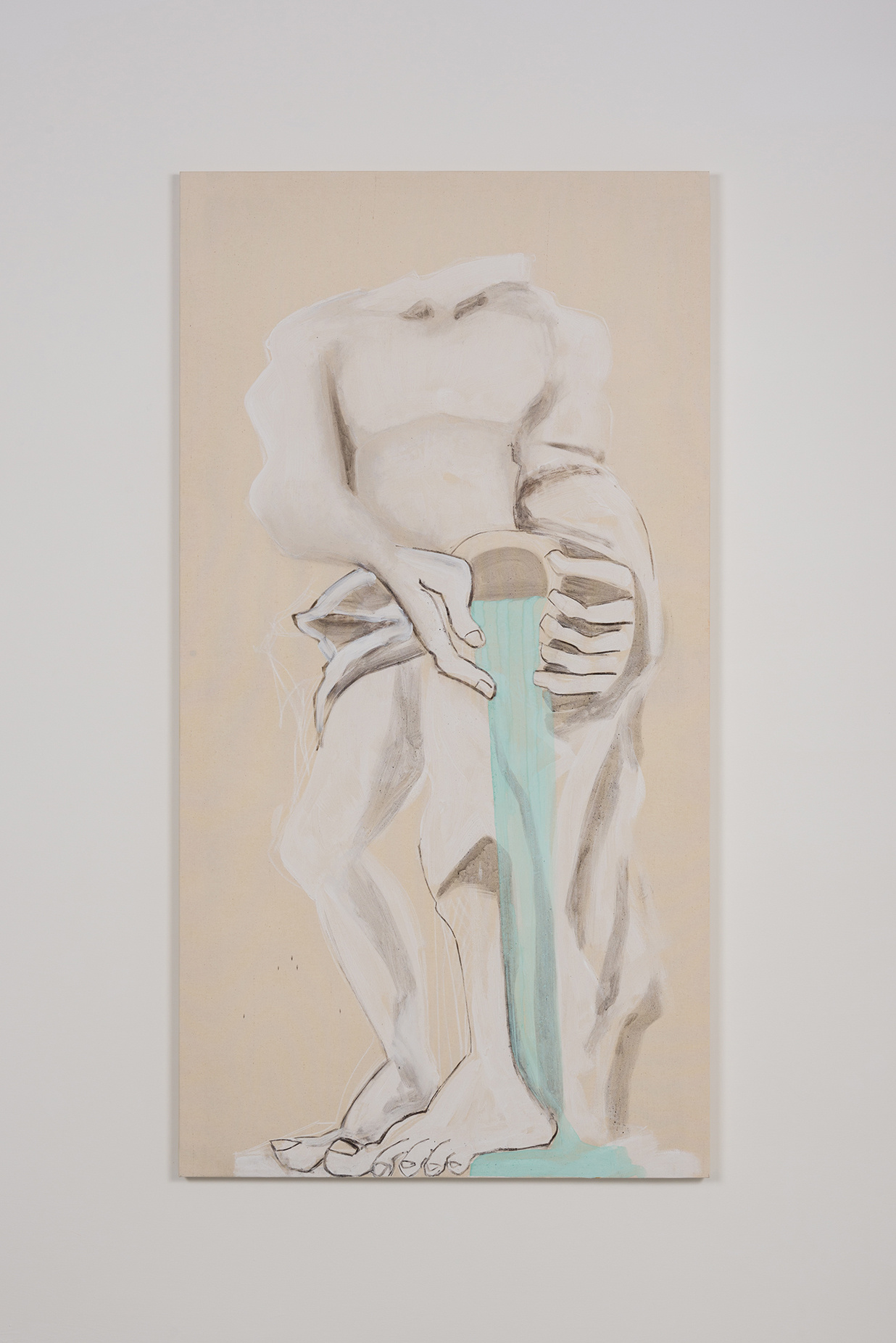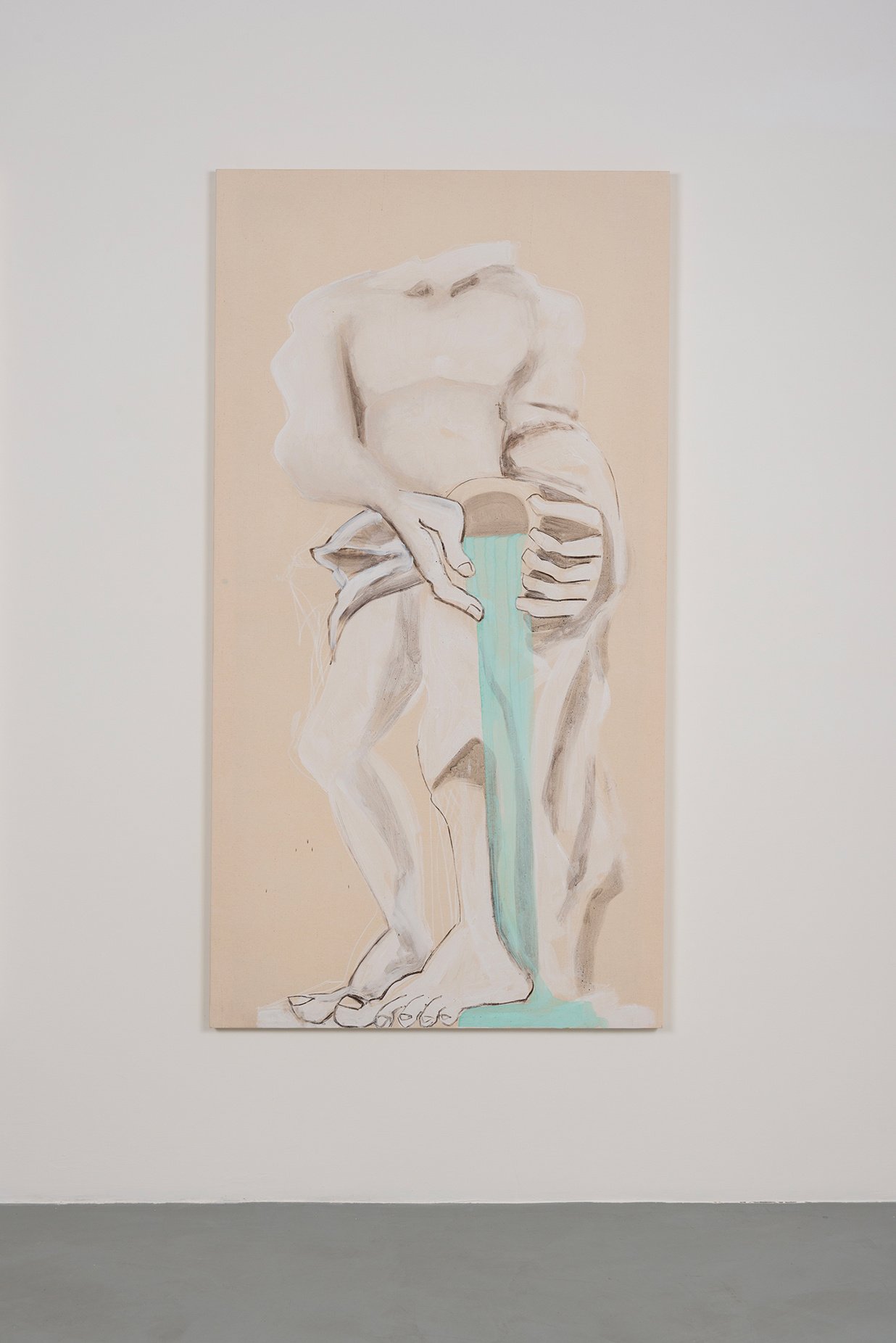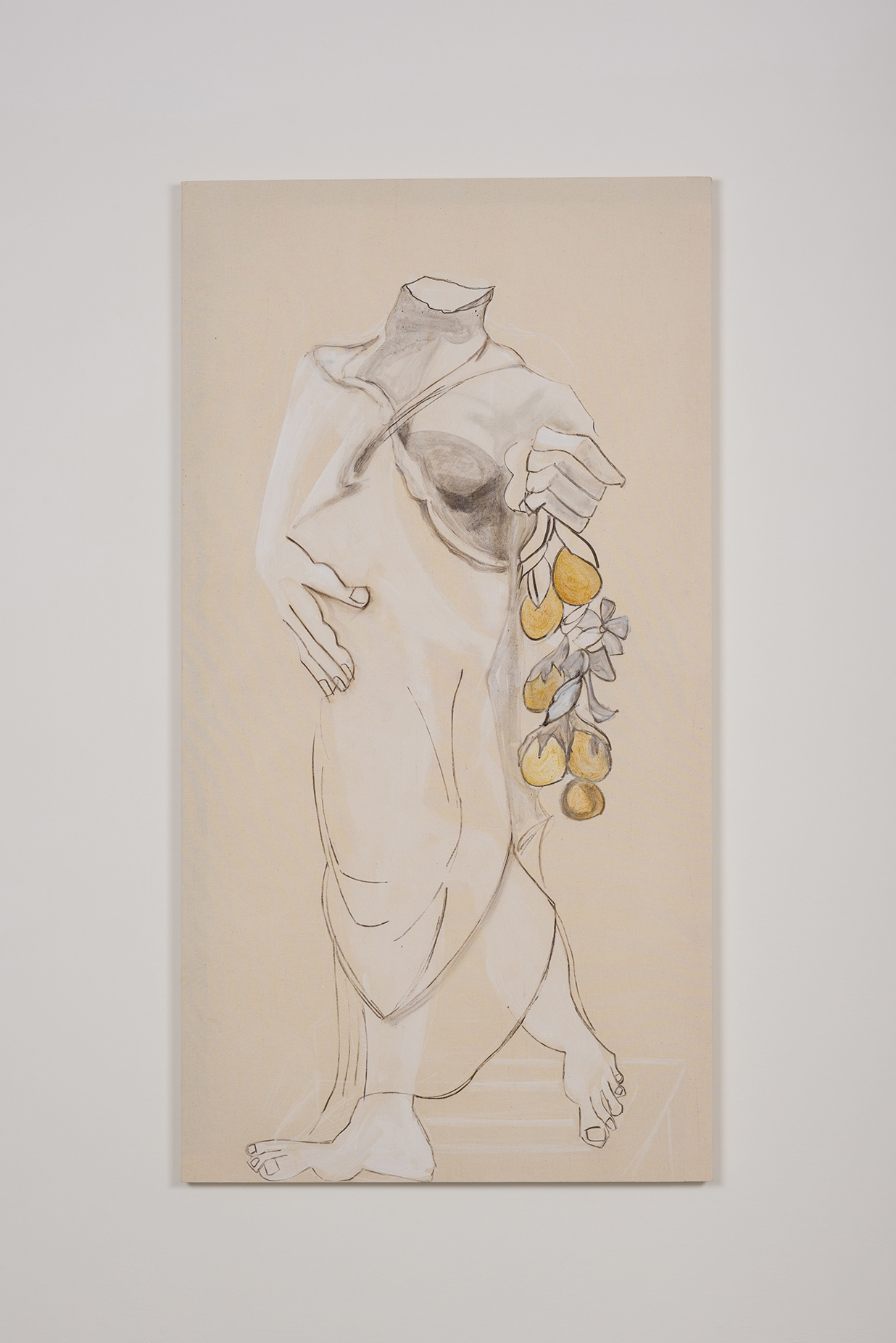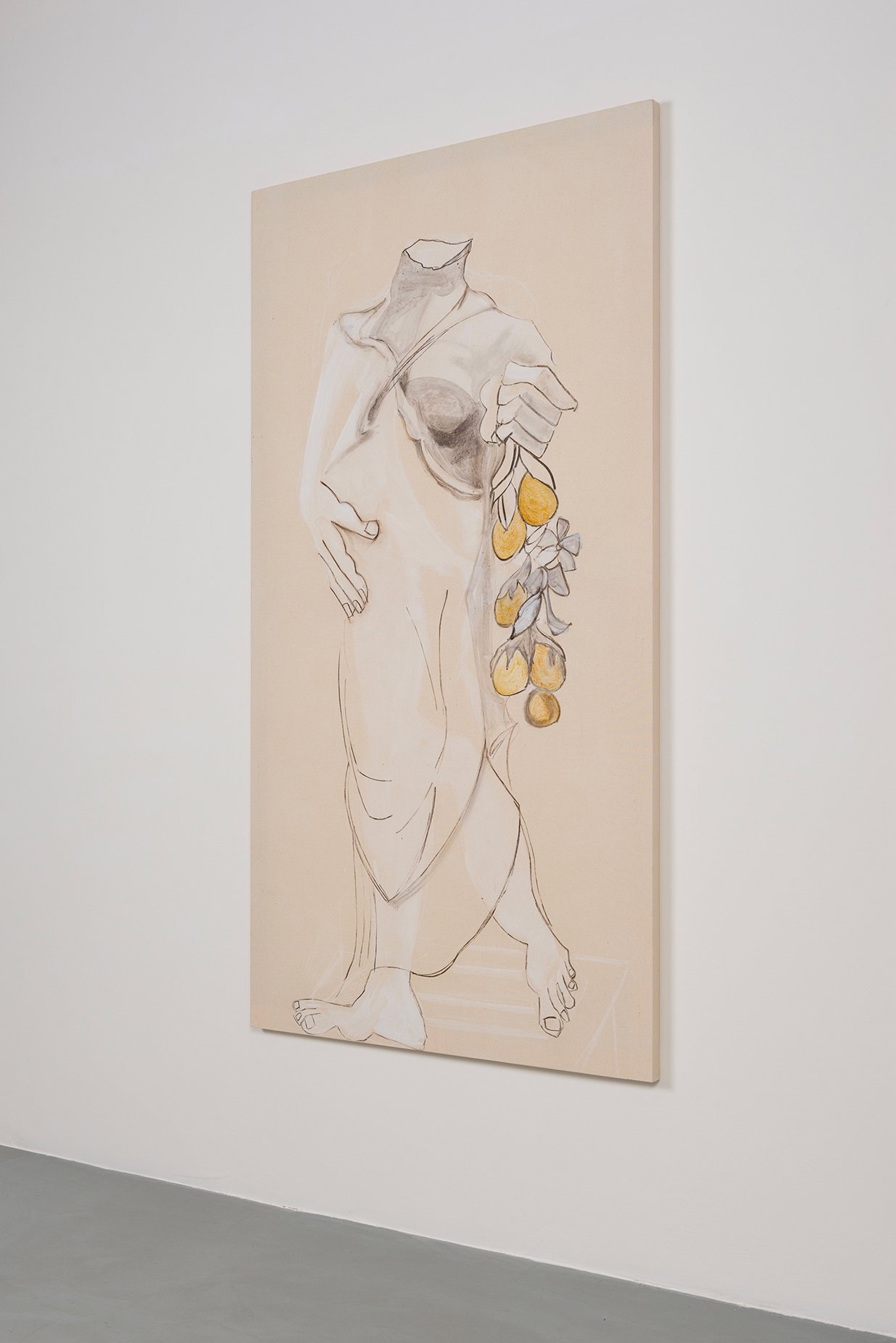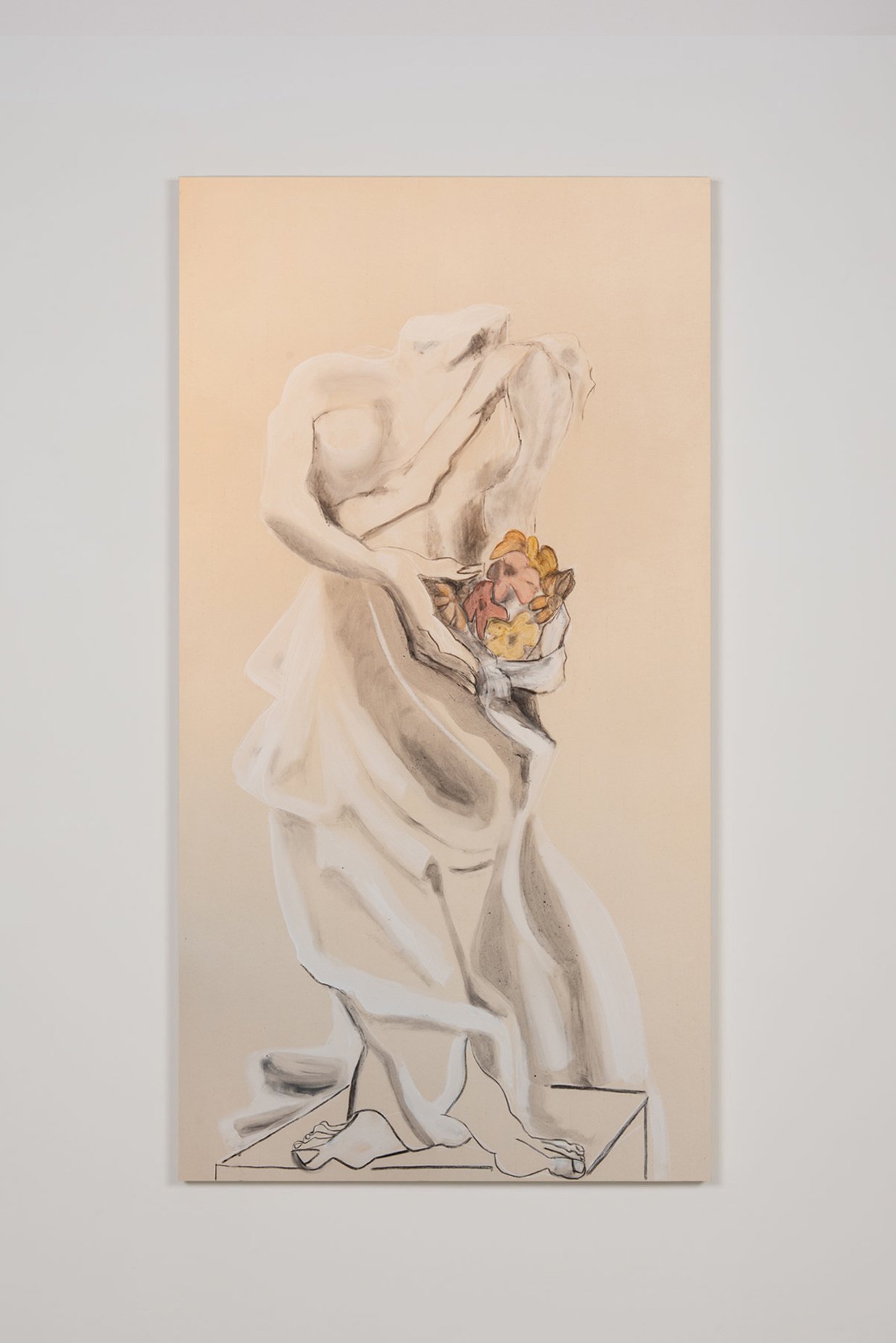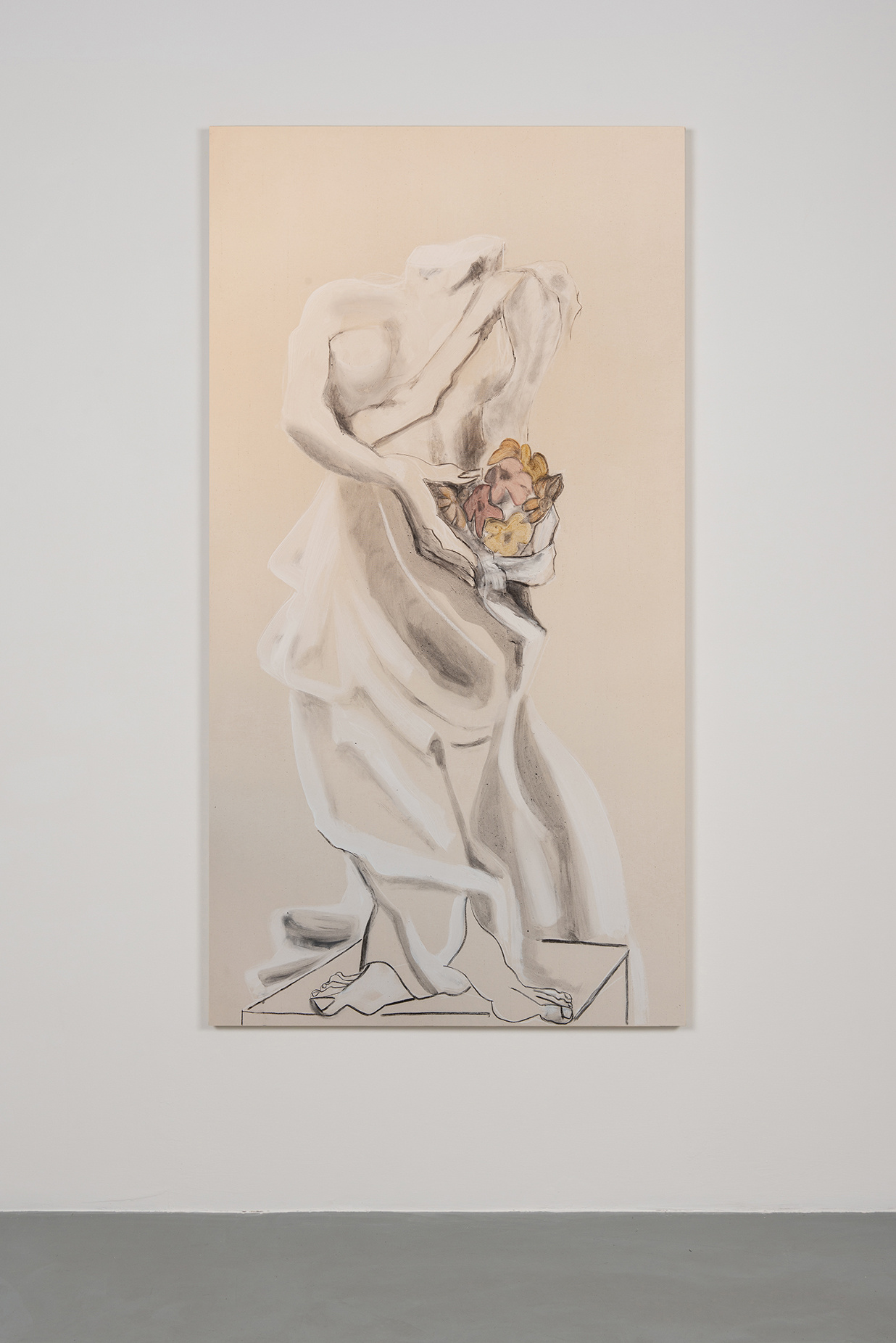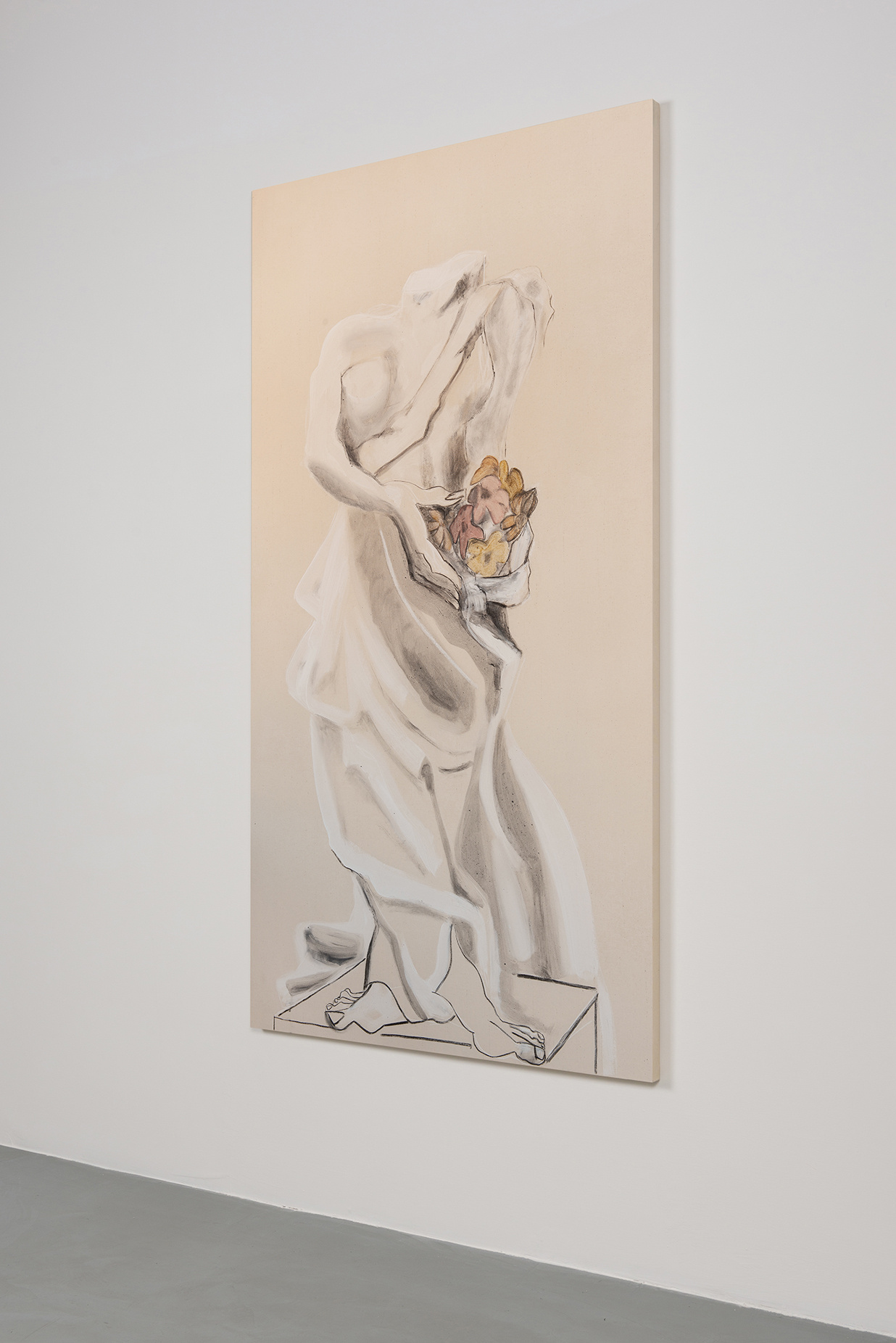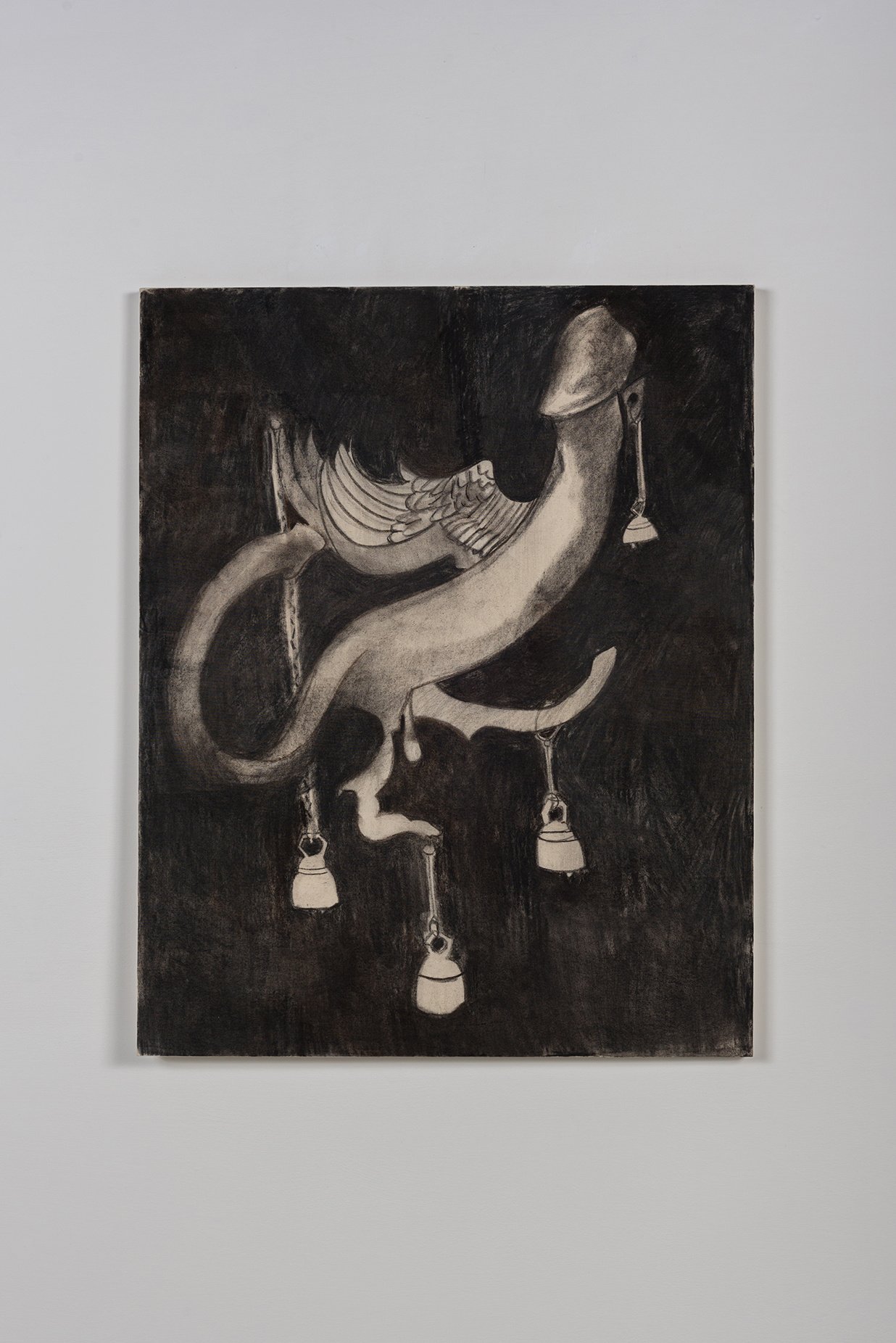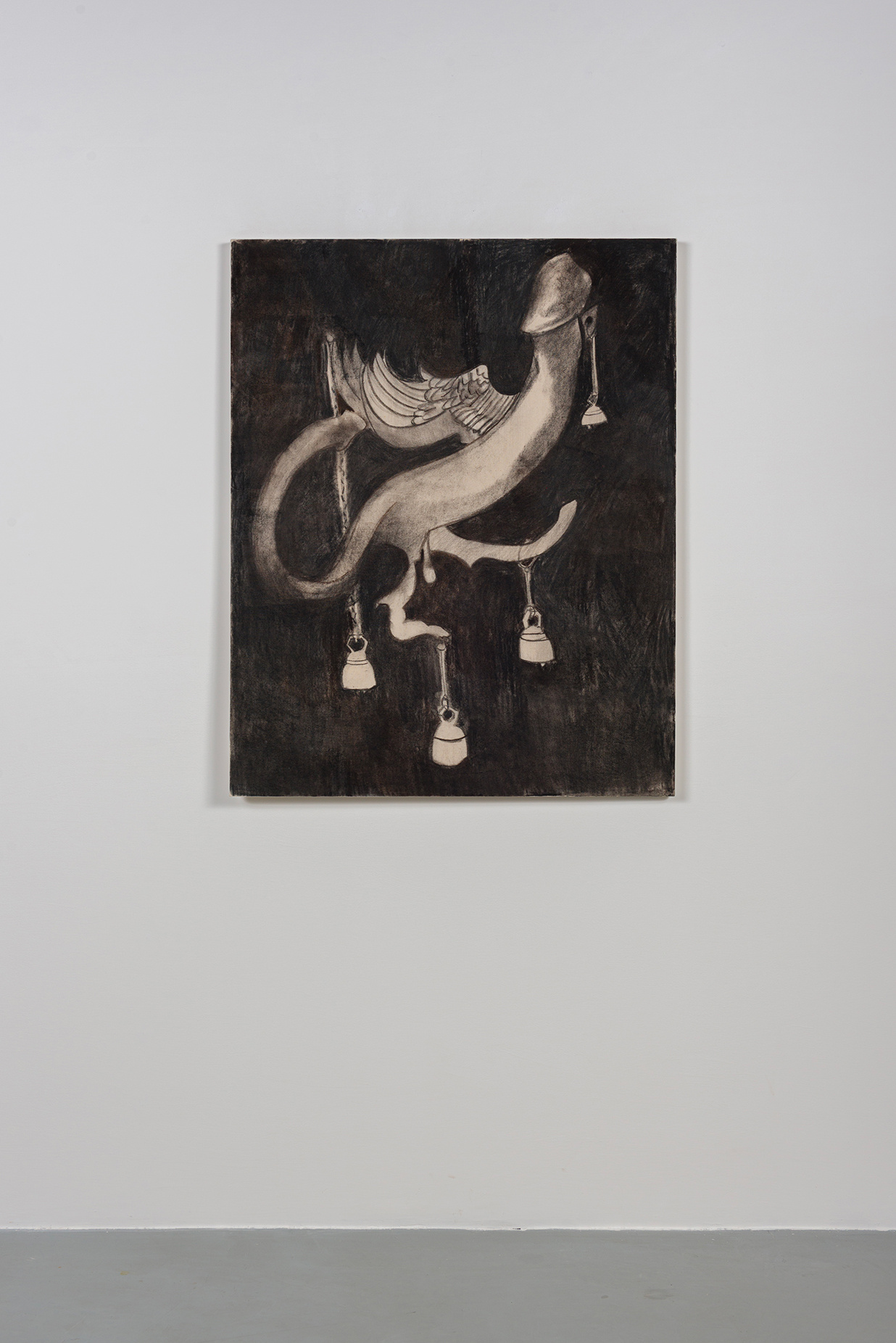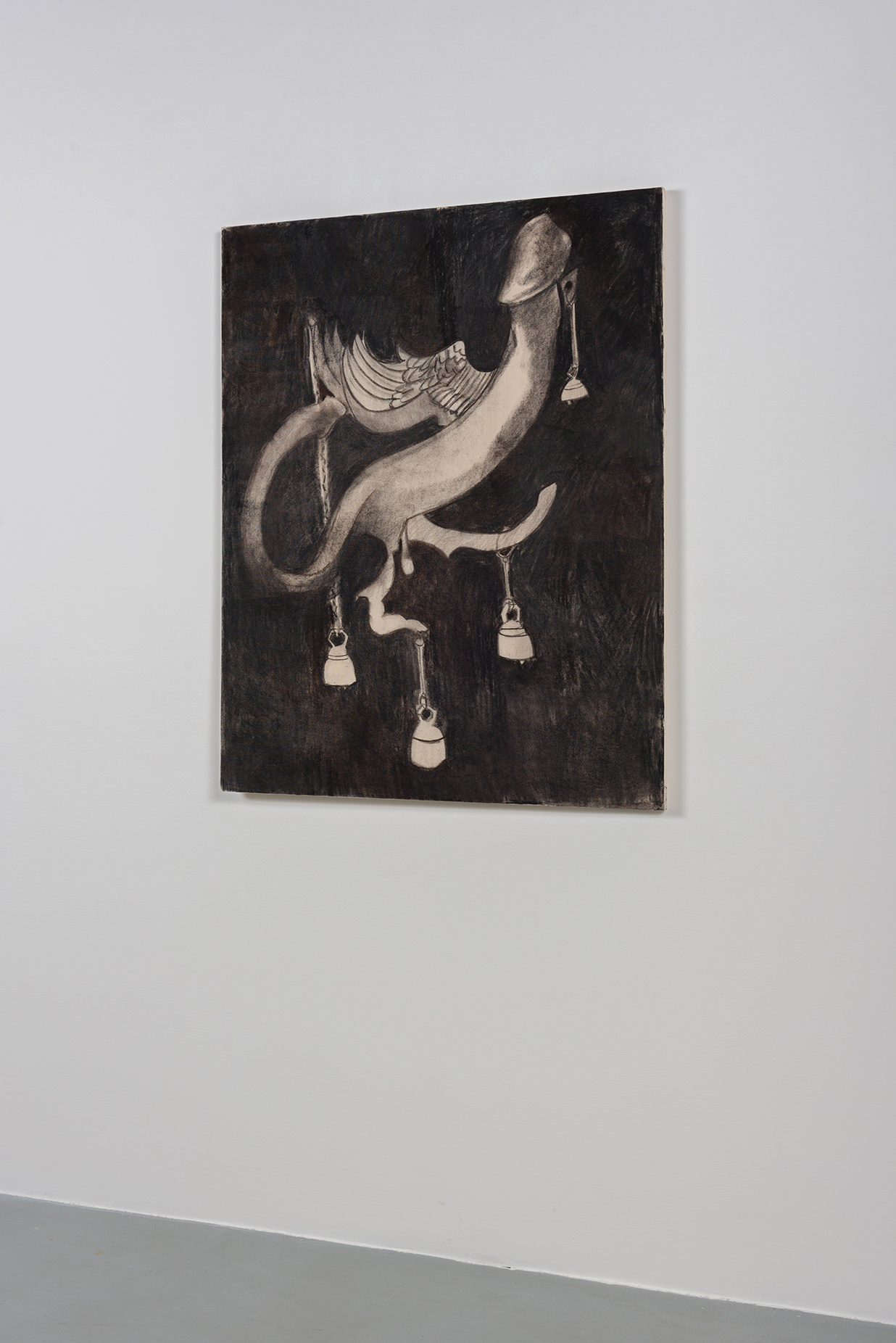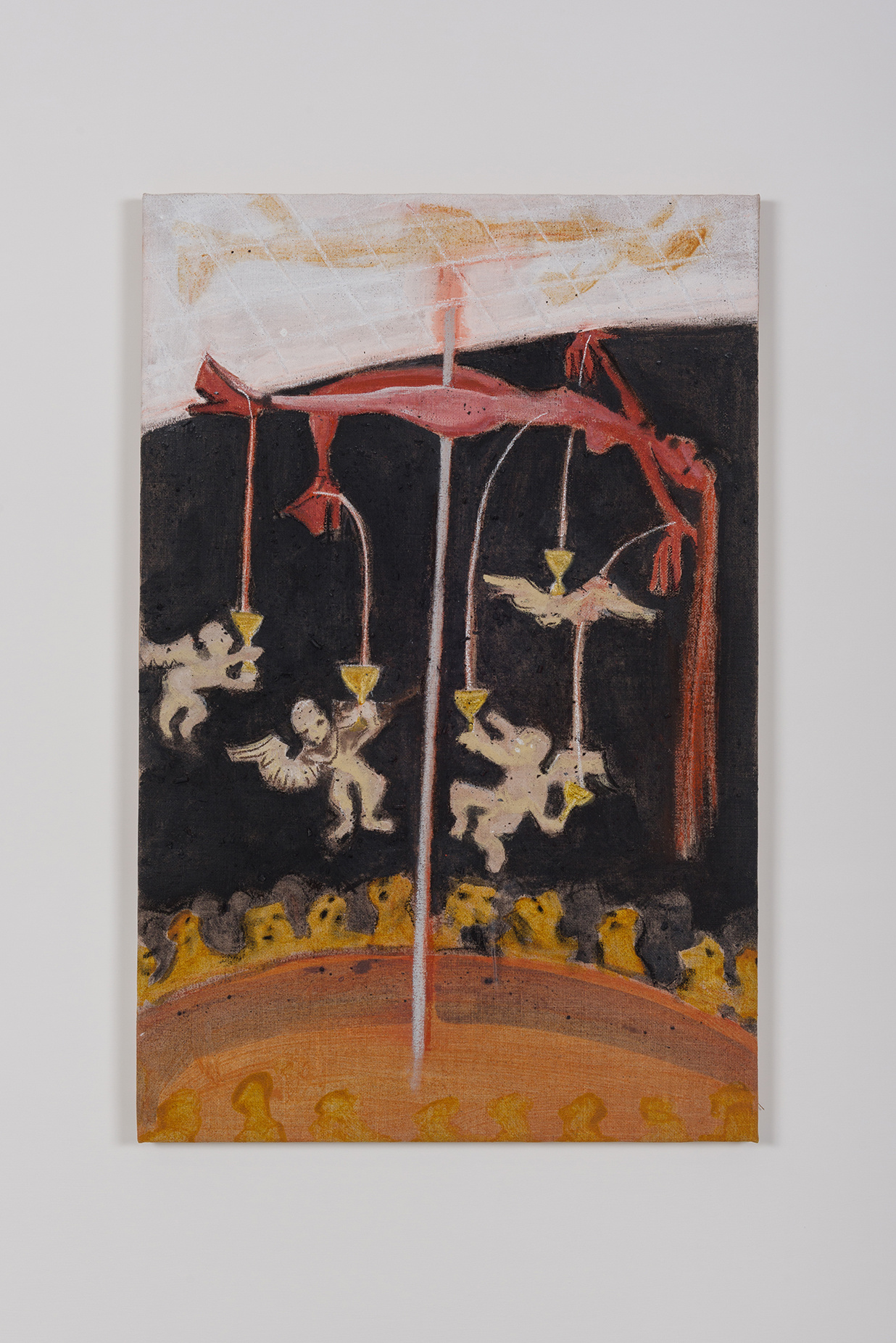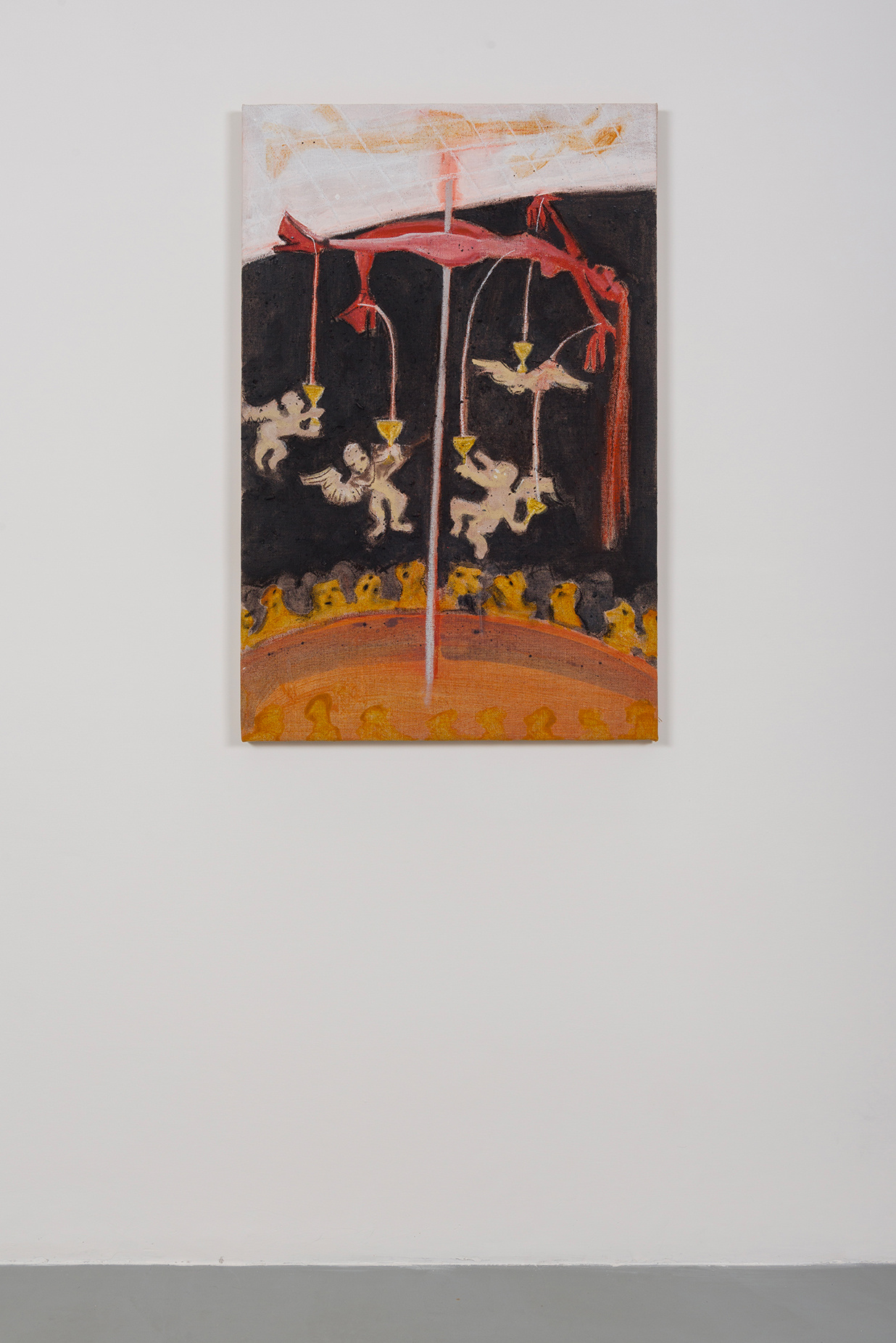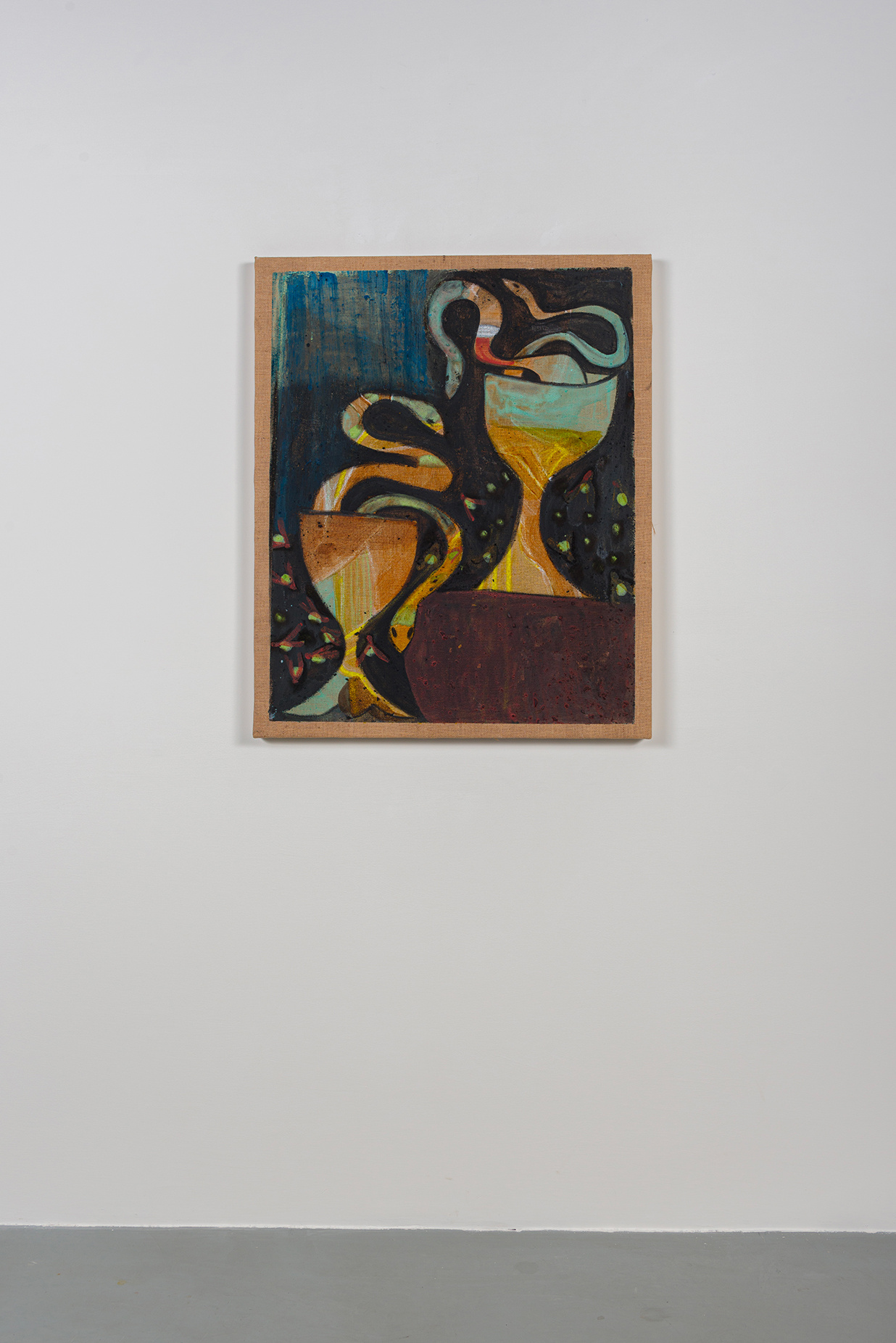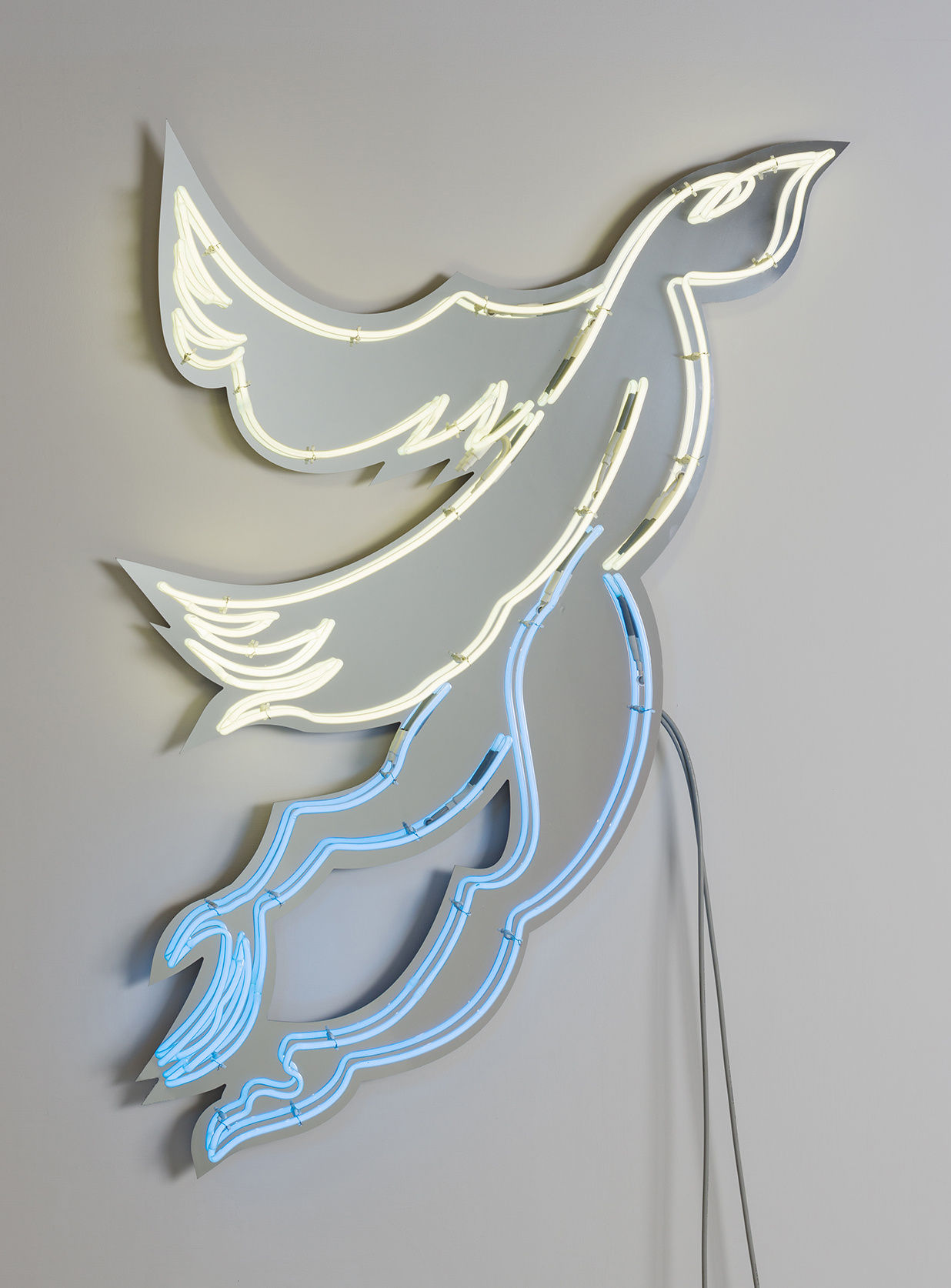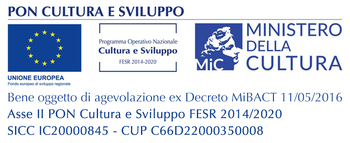In her artistic pursuit, Chelsea Culprit delves deeply into the performance of gender, the visual narratives of labor history, the articulation of gender within the natural world, and the ethereal realms of folk spirituality and ancestry. Embracing a state of heightened consciousness in the present moment, she allows unexpected revelations to inform her work.
Recently, her focus has gravitated towards these latter themes. During a six-week residency in Naples, Culprit immersed herself in the city’s secular traditions, navigating a tapestry of historical milieus and unraveling the complex weave of diverse cultures, mythologies, and anthropological influences. This period marked an intricate journey of recollection and reconnection, characterized by a rhythmic dance of advancing and retreating ideas and decisions.
Culprit seized this opportunity to expand the boundaries of her engagement with craftsmanship, ritual, and exploration. She embraced the practice of charcoal making fires with scavenged wood collected from sacral places and areas of the city such as the Capodimonte and the Vesuvius Parks, and the Botanical Garden. Throughout her travels, she gathered elements to concoct natural pigments and handmade colors, integrating materials like tuff powder, calcium carbonate, copper oxide, and coffee residue. This palette became a tactile extension of her daily experiences in the city.
In collaboration with the Gallery and local artisanal neon makers, she conceived an additional piece for the exhibition, featuring a neon sculpture, a creature reminiscent of a harpy, embodying the synthesis of Culprit’s latest artistic evolution. Culprit’s residency also encompassed numerous visits to Naples’ MANN - National Archeological Museum and other emblematic sites, such as the Museo e Real Bosco di Capodimonte, the Phlegraean Fields Archeological Park, the Sibyl’s Cave in Cumae, the Veiled Christ at Sansevero Chapel MuseumNational Archaeological Museum, enriching her understanding of the city’s unique blend of history and mythology.
Immersing herself in the cultural layers that define Naples’ singular aura, she absorbed influences from art history, diverse cultural imagery, and spiritual traditions, weaving these into a coherent lexicon. This lexicon, informed by Greco-Roman architecture, rituals, dances, female deities, and beliefs, was further enriched by her contemplation of the natural landscape.
In “Ask the Cinders” Culprit attempts to distill these intricate elements of natural and spiritual history into her work. The exhibition title evokes multiple interpretations: a literal reference to myths and mystic figures, a nod to her creative process in Naples using self-crushed pigment dust, and a metaphor for the dispersion of bodies and faith, manifested through choreographed gestures. The cinders also symbolize the traces of Mount Vesuvius, echoing the ancient call for divination and prophecy. The exhibition showcases a collection of artworks, charcoal and pigment works on raw canvas of varying dimensions, born from Culprit’s residency at the ex Lanificio, a former industrial and labor district of Naples. These pieces encapsulate her exploration of the mythological DNA interwoven with Christianity and pre-Christian pagan cults, tracing the absorption of goddess worship through the evolution of Christian iconography. (VVB)
Keywords (References for a deeper understanding of the artist’s practice)
To understand Chelsea Culprit’s practice and go beyond the aesthetics and symbolism in her works, one must go back to 1875, New York, when theosophy was founded. This new esoteric-philosophical doctrine initiates a new aesthetic where art no longer preaches a religion or a classical spirituality alone, neither directly nor through symbols. “Theosophical art” raised the beholder, and the artist, to a higher dimension of being, through beauty. In theory various art forms can achieve this effect but in practice, at this stage of human evolution, post-symbolic or abstract art is most effective.
The esotericism is the doctrine which states that there is a secret beyond the surface of things which reveals their ultimate truth, and it is accessible to those who embark on an initiatory journey by indulging in the ecstasy of art.
By inserting oneself into the evolutionary movement of the universe, one is called to cooperate in the reverse process of “ascent” or spiritualization, where thoughts and feelings have shapes and colors that a clairvoyant eye can discern together with sounds, resulting in synesthesia.
Aerology; Aeromancy; Anthroposophy; Cabbala; Divination; Primitivism; Fourth Dimension; Shamanism; Synesthesia; Symbolic Theosophy; Transcendental Painting Group; Clairvoyance.
Soundtrack: Ali Farka Tourè, Toumani Diabatè - Ruby
Read less
In her artistic pursuit, Chelsea Culprit delves deeply into the performance of gender, the visual narratives of labor history, the articulation of gender within the natural world, and the ethereal realms of folk spirituality and ancestry. Embracing a state of heightened consciousness in the present moment, she allows unexpected revelations to inform her work.
Recently, her focus has gravitated towards these latter themes. During a six-week residency in Naples, Culprit immersed herself in the city’s secular traditions, navigating a tapestry of historical milieus and unraveling the complex weave of diverse cultures, mythologies, and anthropological influences. This period marked an intricate journey of recollection and reconnection, characterized by a rhythmic dance of advancing and retreating ideas and decisions.
Culprit seized this opportunity to expand the boundaries of her engagement with craftsmanship, ritual, and exploration. She embraced the practice of charcoal making fires...
Read more
